
The holy grail for my trip: Grauer´s Broadbill
I was a little bored early May and at the spur of a moment decided to do an exploratory trip. I was supposed to go with Isaac Kilusu to Minziro forest mid May, but decided to do Uganda first. I left for Kenya on May 5 and spent a couple of days in Nairobi with Selvine, before I started the long drive to Kampala. I was supposed to meet up with my friend Katushabe Giraffe there and stay the night. Just when I drove in to Giraffe´s compound, I heard a terrible noise from the gear box and had to call for help. On May 8th a tow truck picked me up and took me to a nearby garage. It took the entire day to fix a few issues with the car. All in all I had a fantastic trip in terms of birds, but my old trusty Land Rover, Lizzie, caused me quite a few headaches on the trip. More on that later. In terms of birds I added 23 EA Lifers and 34 EA Picture lifers taking my total for East Africa to 1129 Birds seen and 1081 photographed. For Tanzania, I added 32 TZ Lifers and 19 TZ Photo Lifers taking my Tanzanian total to 888 birds seen and 838 photographed. This was an ego trip. I was only interested in finding new birds that I did not have from Uganda or getting pictures of birds I had seen and did not have pictures off and getting better pictures of birds I only had bad pictures off before. For that reason I avoided Shoebill, Kibale for the Green Pitta, the only endemic bird in Uganda Fox´s Weaver etc. On my normal trip, those places will be included. I do customised 2 week, 3 week and 4 week trips to Uganda that can be combined with Rwanda. contact me at holmenp@gmail.com for more information. People ask me for the best time to visit Uganda. The best time is probably July. Why did I go in May this year? My biggest target for this trip were the Grauer´s Broadbill. This bird nests late May to mid June and the local guides find the nests in that period. Yes, the negative side were trudging through mud in Semuliki for 3 days, but I still got very nice birds in Semuliki despite the very muddy paths and some heavy rain. All in all, I drove 4.467 km on this trip!

Not a good start to my Ugadan adventures
Day 1, Tuseday May 9: Kampala to Murchison´s Fall
Giraffe and I started early for Murchison´s fall to avoid the Kampala traffic. We were at the entrance to the park around 10:30. On the way from Kampala, we picked up a few birds: Ross´s Turaco, Piapiac, Broad-billed Roller, Lizard Buzzard, Eastern Plantain-eater, Meyer´s Parrot and Brown Snake-Eagle. Once inside the park, we headed for the Red Chilly Camp. The only bird of interest we picked up on the way was the newly split Western Crested Guineafowl. We arrived in good time before lunch. It were very hot, so we took a small walk around the garden of the camp and picked up a few birds. Here are some of them: Black-headed Gonolek, Silverbird, Northern Grey-headed Sparrow, Olive Sunbird, Red-cheeked Cordon-bleu, Yellow-rumped Tinkerbird, Red-winged Grey Warbler (My first lifer of the trip), Red-winged Prinia, and Spotted Palm-Thrush. As I started the car after lunch, the starter did not stop and smoke came from it. After a quick stop at the local repair shop it was decided that we had to do without the starter in Murchison´s Fall. The starter were fixed the day before! I have quite some experience starting the car in gear, so it proved to be no problem. We crossed the river and started birding. Here are some of the birds we registered that afternoon: Speckle-fronted Weaver, Zitting and Croaking Cisticola, Plain-backed Pipit, Piapiac, Grey Kestrel, Yellow-billed Oxpecker, White-backed Vulture, Jacobin Cuckoo, Grey-backed Fiscal, African Grey Hornbill, Swallow-tailed Bee-eater, White-browed Coucal, Shelley´s Sparrow (Lifer), Dark Chanting Goshawk, Crested Francolin, Black-billed Wood Dove, African Wattled Lapwing, Grey-headed Kingfisher, Sooty Chat, Brown Snake Eagle, Juvenile Bateleur, Black-bellied Bustard, Rüppel´s Vulture, Abyssinian Ground Hornbill and Tawny Eagle. We were back in camp around 18:30 in time for a shower before Dinner. A good start on the trip with two lifers. The Warbler were definitively one of my prime targets.
Some pictures from Day 1:
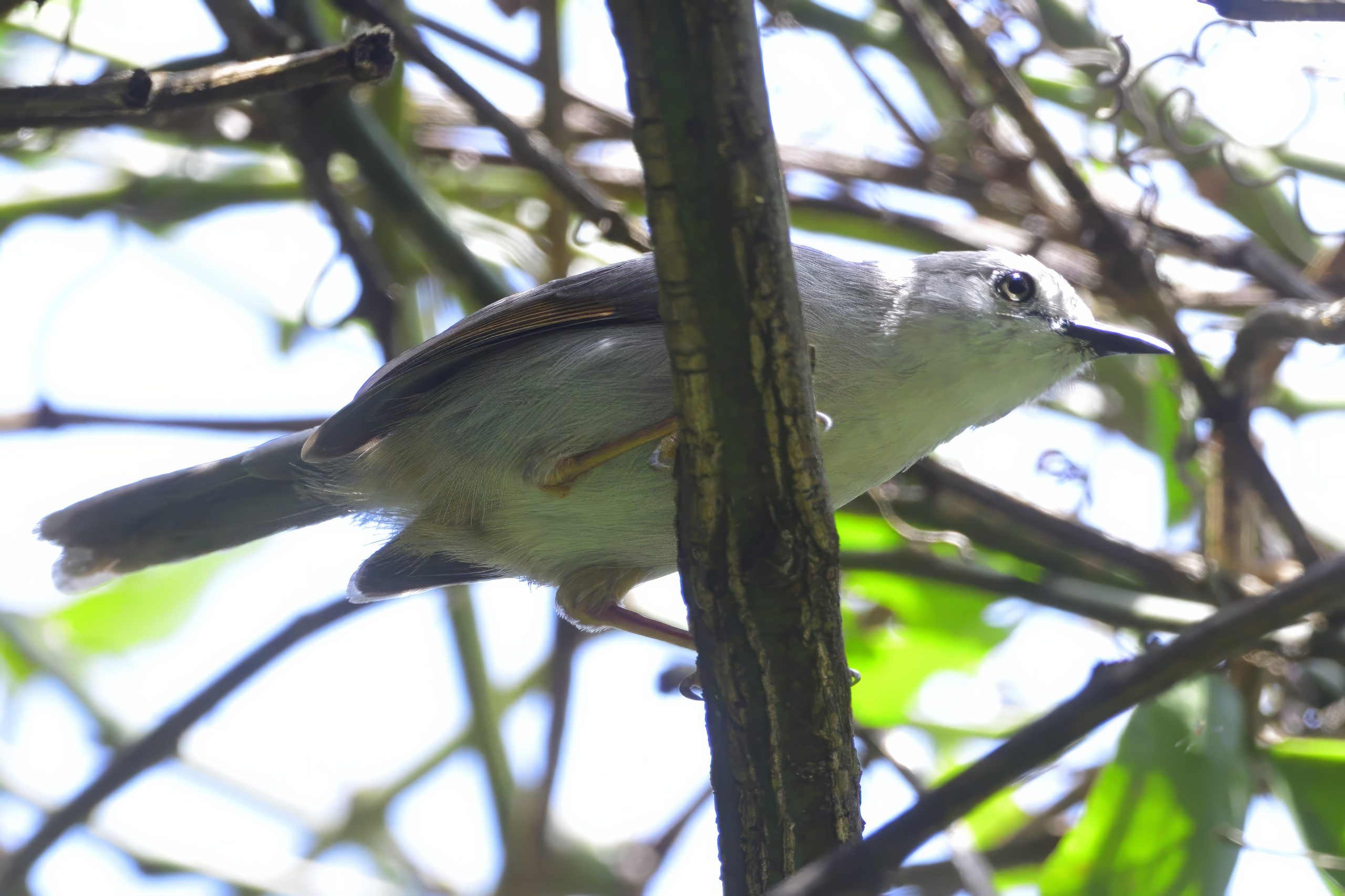
Red-winged Grey Warbler, Drymocichla incana – Lifer,

Red-cheeked Cordon-bleu, Uraeginthus bengalus
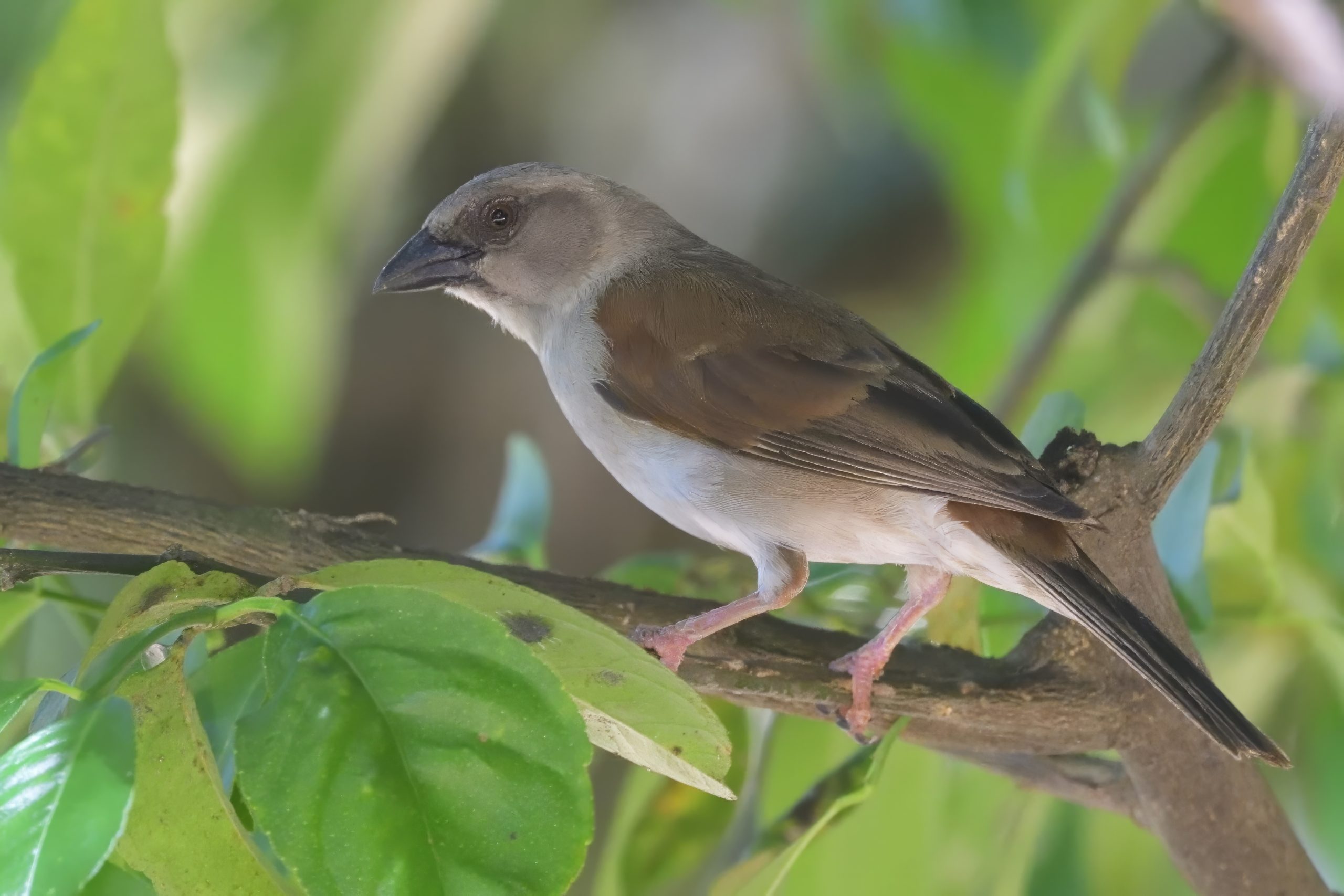
Northern Grey-headed Sparrow, Passer griseus

Olive Sunbird, Cyanomitra olivacea
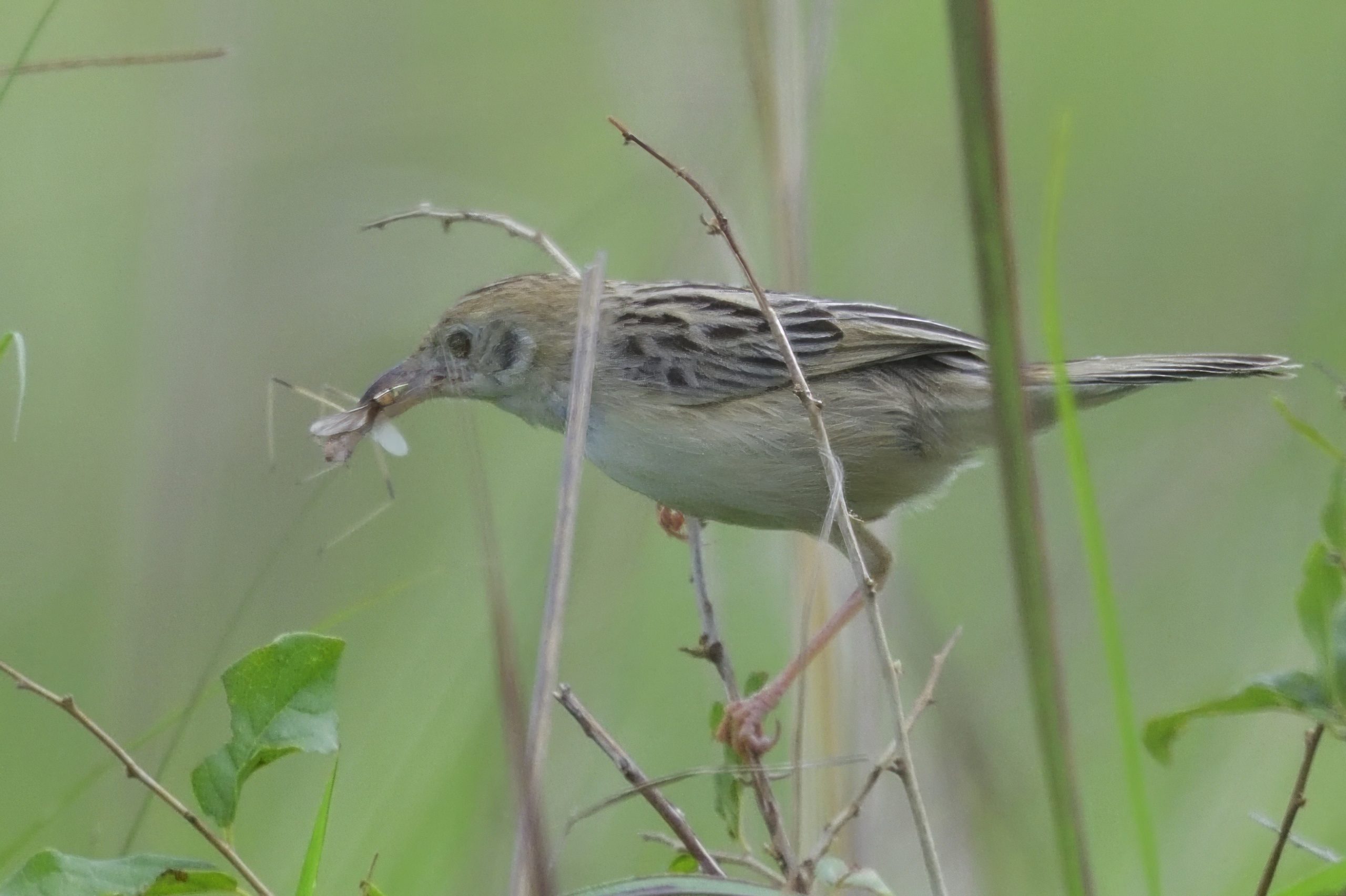
Croaking Cisticola, Cisticola natalensis

Piapiac, Ptilostomus afer
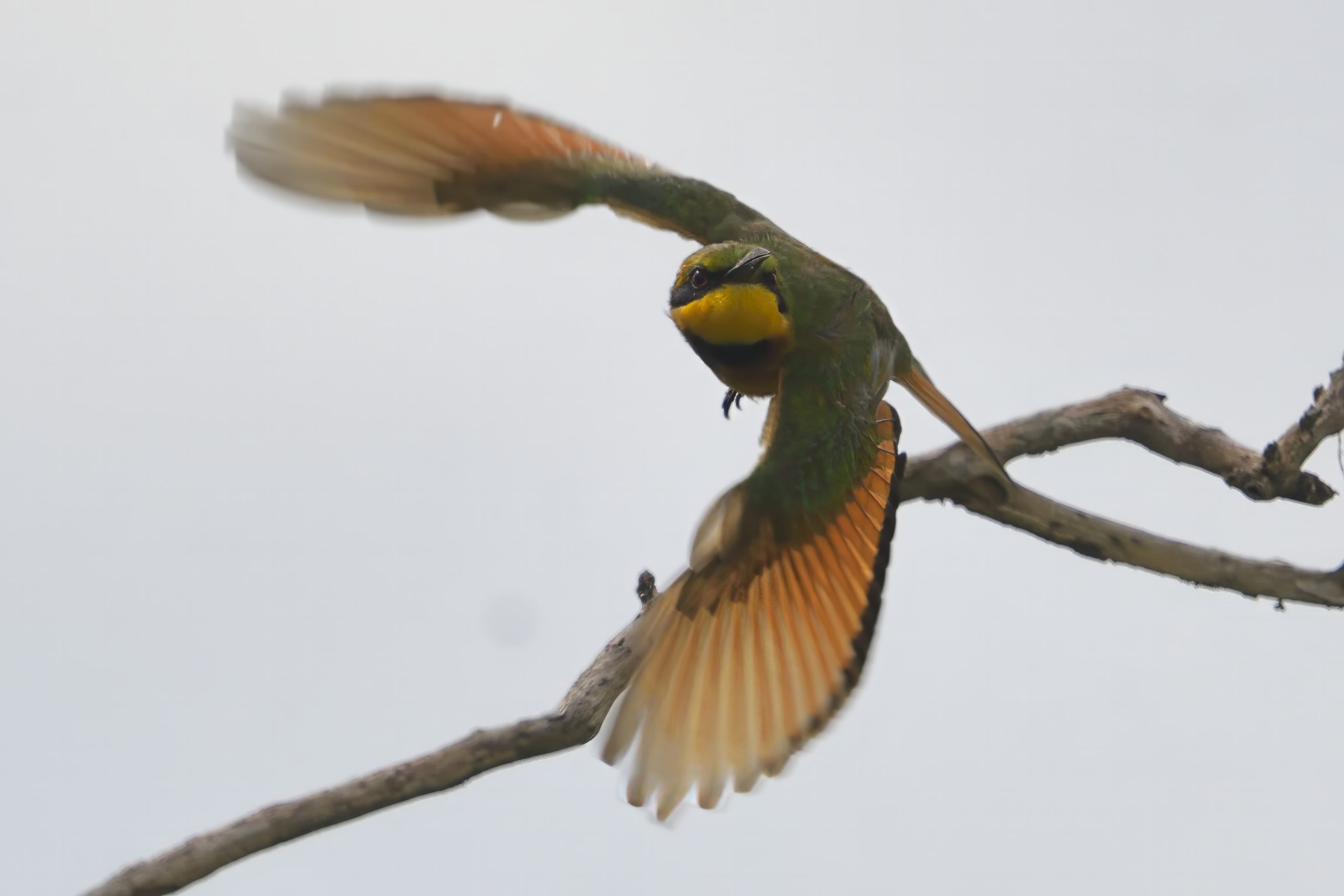
Little Bee-eater, Merops pusillus
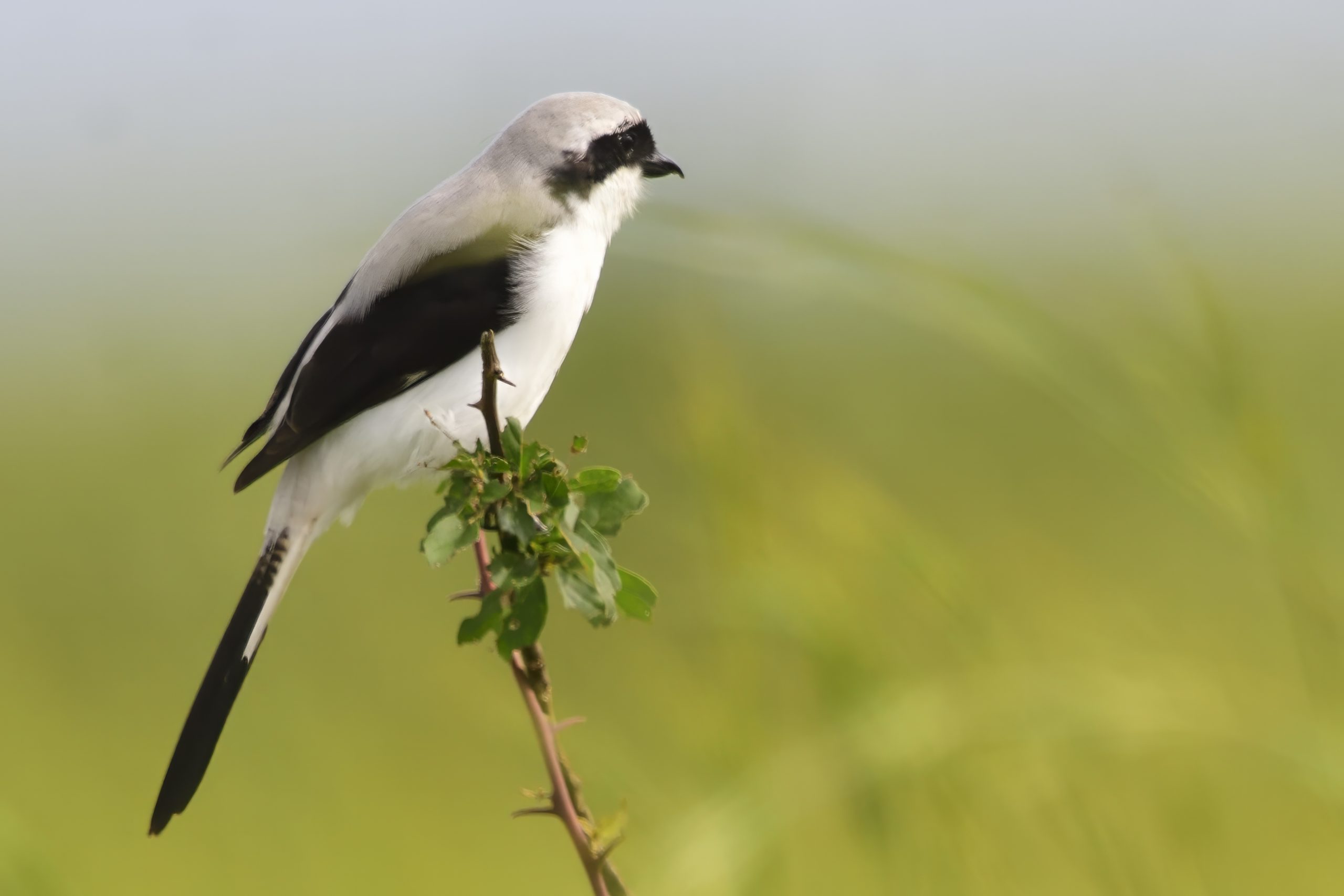
Grey-backed Fiscal, Lanius excubitoroides
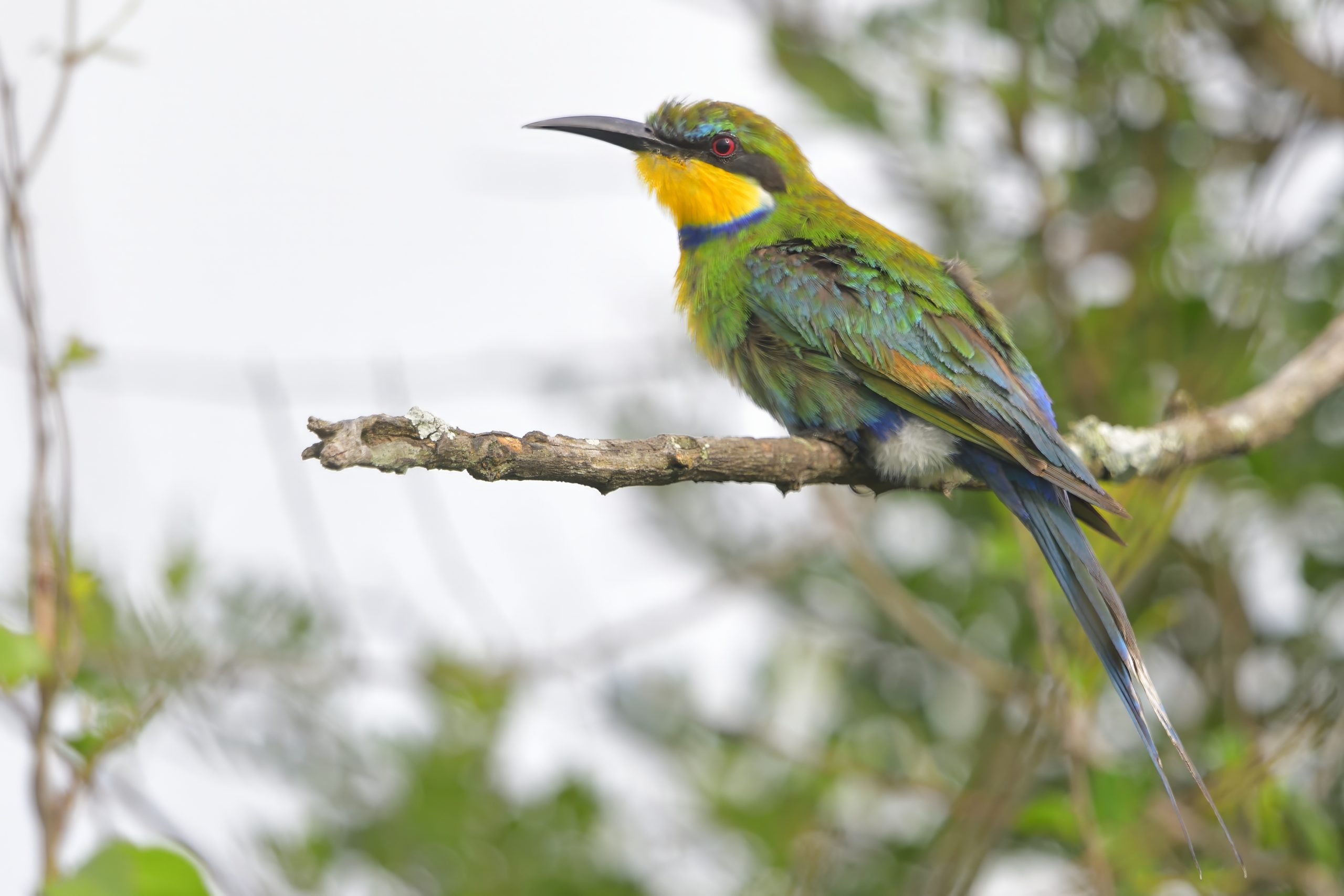
Swallow-tailed Bee-eater, Merops hirundineus

African Wattled Lapwing, Vanellus senegallus

Black-billed Wood Dove, Turtur abyssinicus

Dark Chanting Goshawk, Melierax metabates

Grey Kestrel, Falco ardosiaceus

Black-bellied Bustard, Lissottis melanonogaster

Brown Snake Eagle, Circaetus cinereus

Sooty Chat, Myrmecocichla nigra

Rüppel´s Vulture, Gyps rueppelli
Day 2, Wednesday, Day 10: Murchison´s National Park
We headed out early for a new drive in the park. We took another route that day. Here are some of the new birds we registered in the park: Black-headed Weaver, Senegal Coucal (EA Lifer), Common Waxbill, Northern Red Bishop, Black-crowned Tchagra, Grey Wren-Warbler, African Pygmy Kingfisher, Marabou Stork, African Openbill, Chestnut-crowned Sparrow-Weaver, Blue-naped Mousebird, Red-billed Quelea, African Fish Eagle, White-browed Sparrow-Weaver, Spur-winged and Black-headed Lapwing. We stopped for Breakfast at a picnic spot. After breakfast we added the following birds: Glossy Ibis, African Jacana, African Sacred Ibis, Egyptian Goose, Denham´s Bustard, Slate-coloured Boubou, White-faced Whistling Duck, African Darter, Wire-tailed Swallow, Northern Carmine Bee-eater, Goliath Heron and Pied Kingfisher. We returned to camp for lunch. After lunch, I took a walk around camp, but did not pick up any new birds. We were advised to go to another camp for the afternoon, but it were very dead and we only added Klaas´s Cuckoo, Red-fronted Tinkerbird, Eastern Plantain-eater, Red-chested Cuckoo, Black-headed Heron, Yellow-billed Duck and Orange-breasted Bushshrike to our list. We had a little light before dinner and found Brown-throated Wattle-eye and Rüppel´s Starling in the garden. I showered and we had dinner. Only one EA lifer that day.
Some pictures from Day 2:
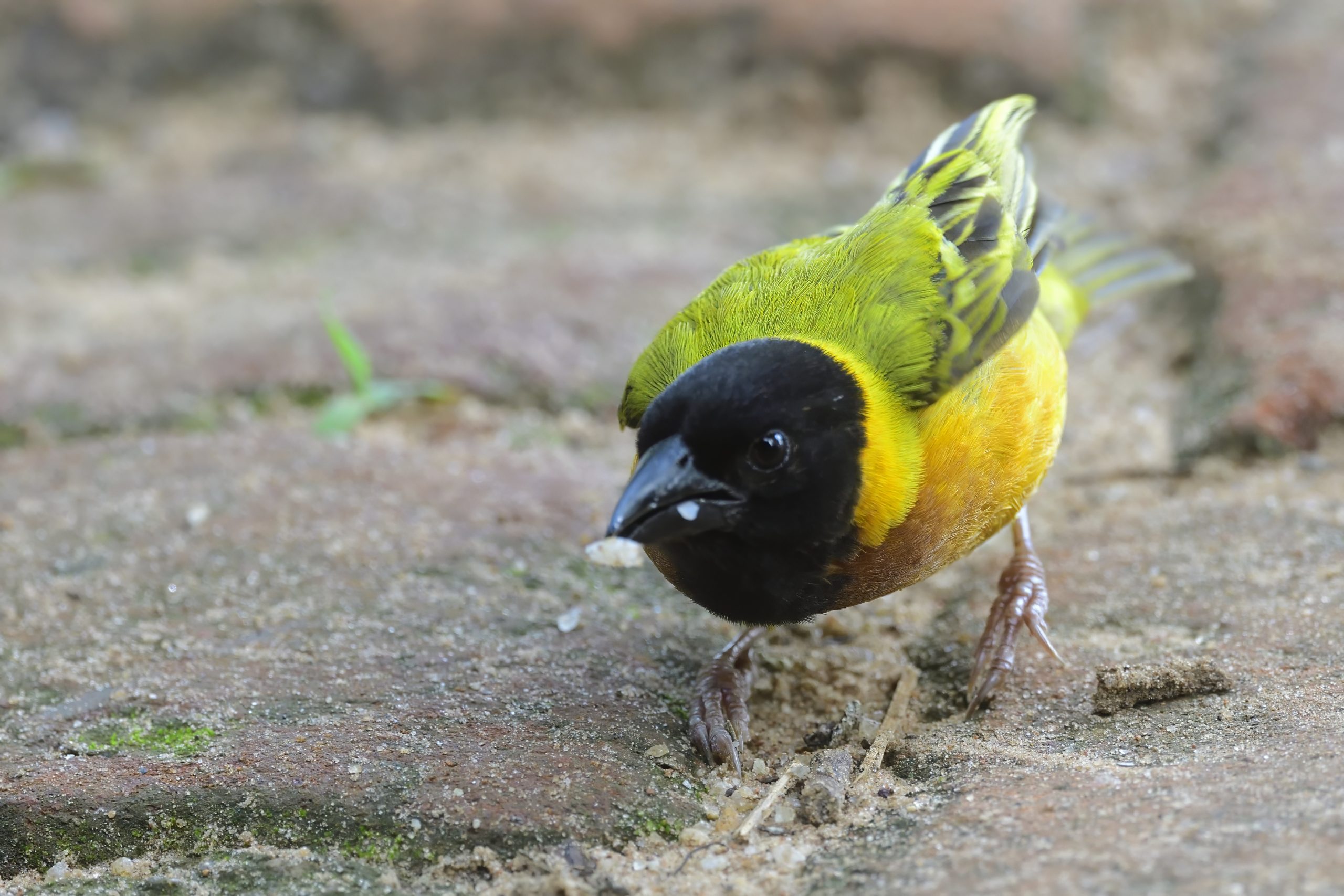
Black-headed Weaver, Ploceus Melanocephalus
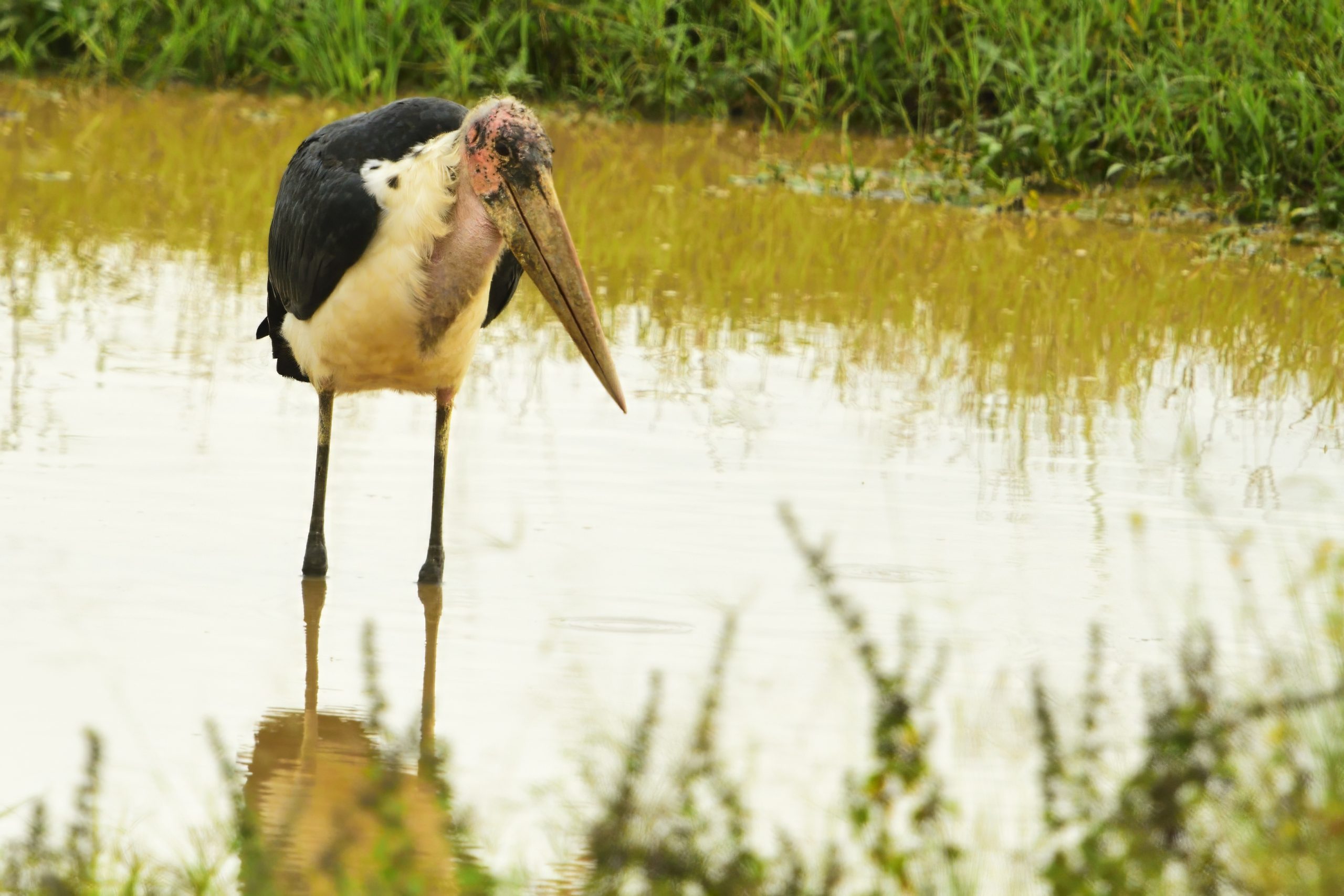
Marabou Stork, Leptoptilos crumenifer

Shelley´s Sparrow, Passer shelleyi – Lifer

Grey Wren-Warbler, Calamonastes simplex

Senegal Coucal, Centropus senegalensis – EA Lifer

Jacobin Cuckoo, Clamator jacobinus

White-browed Coucal, Centropus superciliosus

Chestnut-crowned Sparrow-Weaver, Plocepasser supercilliosus

African Fish Eagle, Haliaeetus vocifer

Female Northern Red Bishop, Euplectes francicanus

Northern Red Bishop, Euplectes fraciscanus
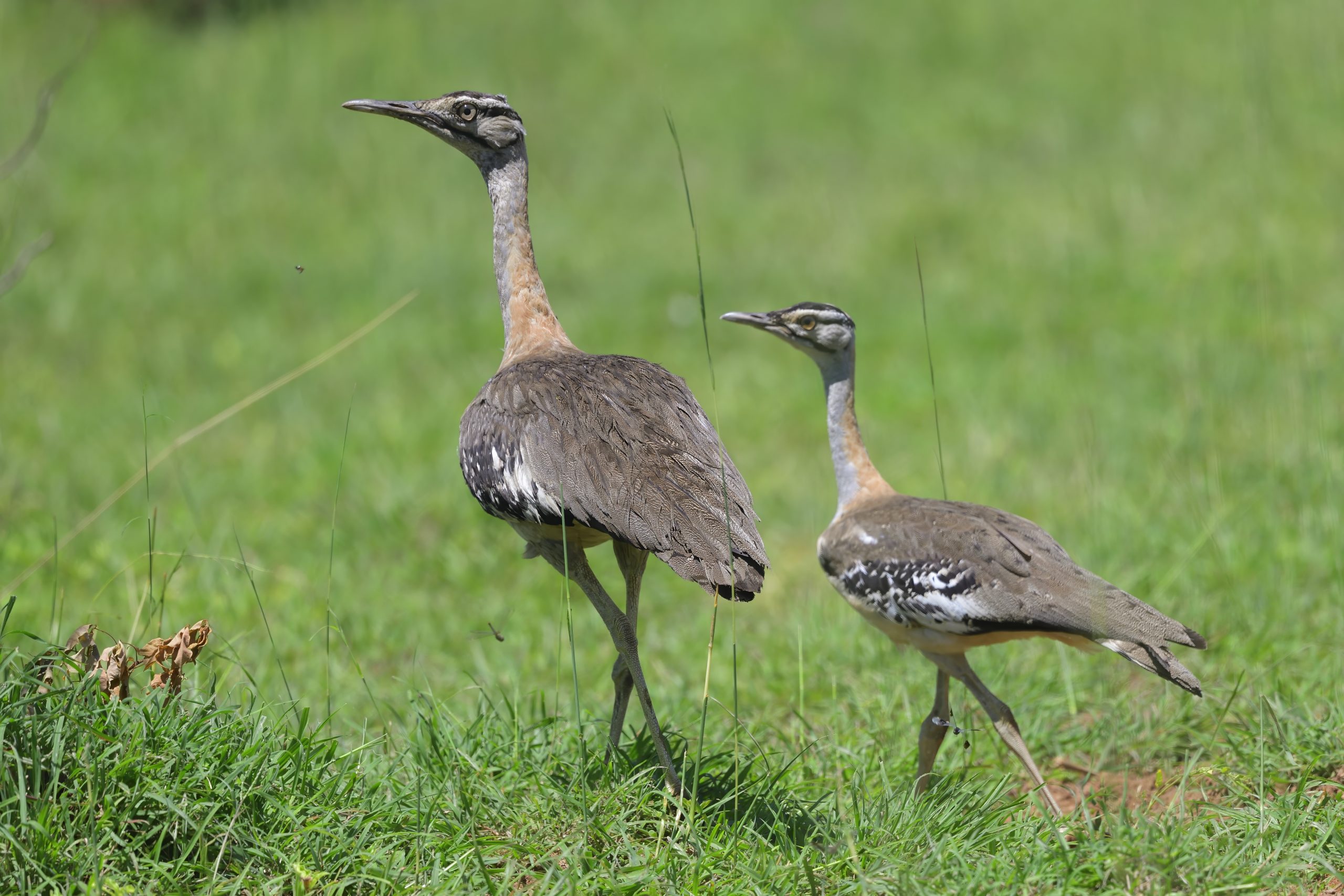
Denham´s Bustard, Neotis denhami

Helmeted Guineafowl, Numedia meleagris, race Ptilorhynca major

Black-headed Lapwing, Vanellus tectus

Spur-winged Lapwing, Vanellus spinosus
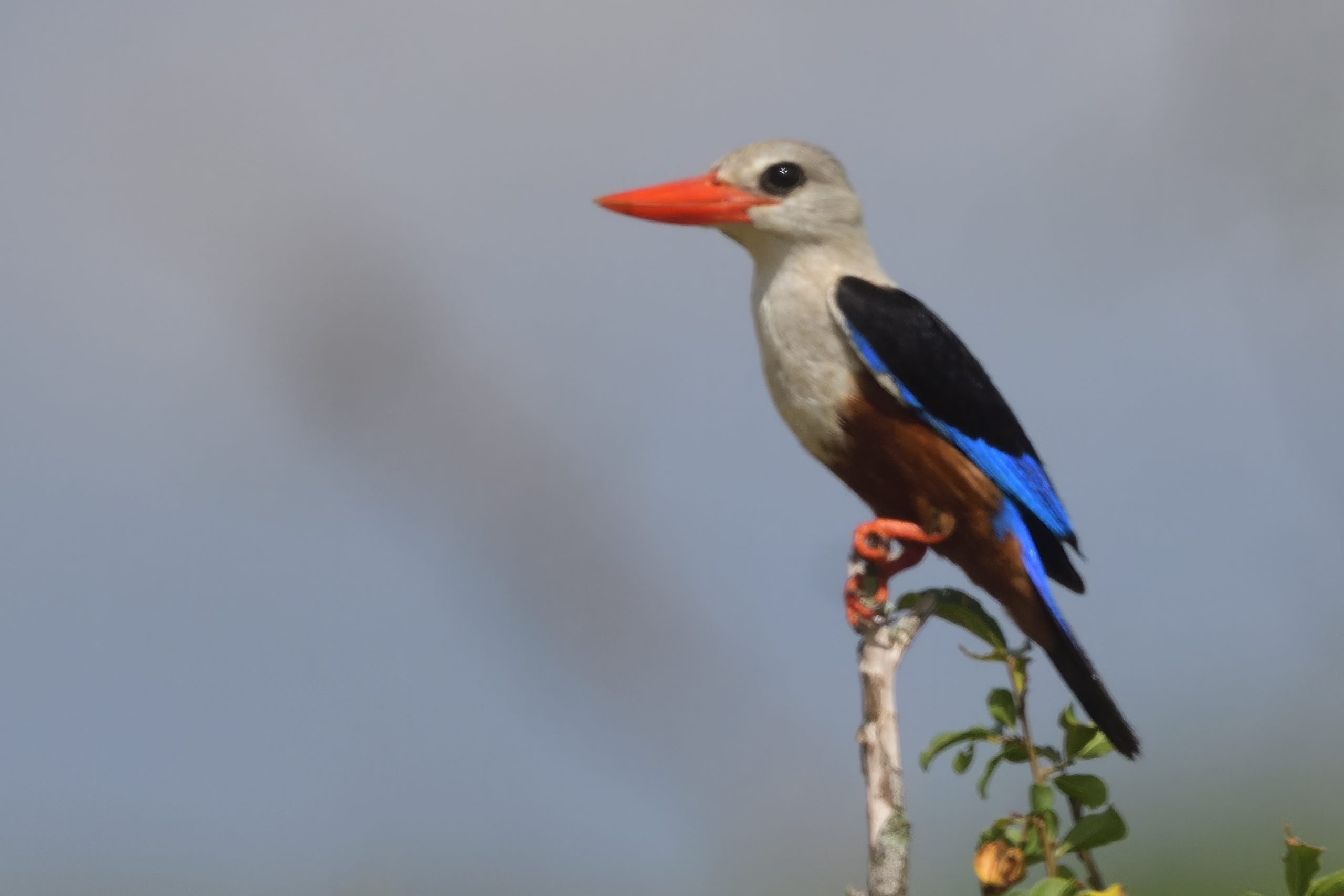
Grey-headed Kingfisher, Halcyon leucocephala

Breakfast spot in Murchison´s National Park by Lake Albert

Bateleur, Terathopius ecaudatus

White-browed Sparrow-Weaver, Plocepasser mahali

Juvenile Piapiac, Ptilostomus afer

Zitting Cisticola, Cisticola juncidus

Grey Kestrel, Falco ardosiaceus

Black-crowned Tchagra, Tchagra senegalus
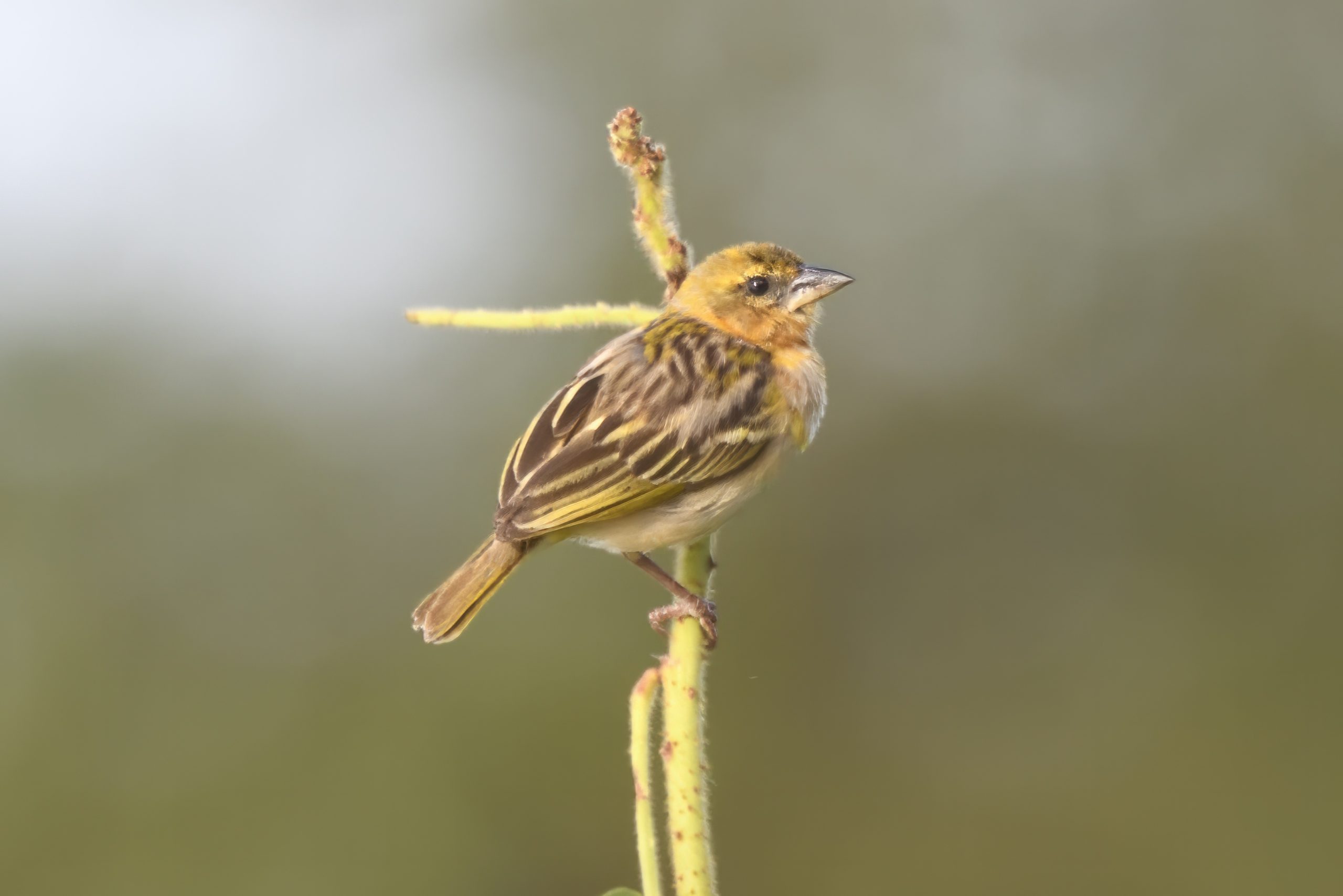
Female Black-headed Weaver, Ploceus melanocephalus

Juvenile Silverbird, Empidornis semipartitus

Silverbird, Empidornis semipartitus

Black-headed Gonolek, Laniarius erythrogaster

Speckle-fronted Weaver, Sporopipes frontalis

Spotted Palm Thrush, Cichladusa guttata – Endemic to NE Africa

Rüppel´s Starling, Lamprotornis purpuroptera – Endemic to NE Africa
Day 3, Thursday, May 11: Murchison´s to Bundungo Forest and Masvindi
We left camp early to go to Bundungo Forest. Unfortunately it was raining when we arrived so we had to wait an hour to start the birding. On the way there, we saw Woolly-necked Stork, Hamerkop and got some great pictures of the Abyssinian Ground Hornbill. Finally, the rain stopped and we started birding by the road. Here are some of the birds we saw: Fraser´s Rufous Trush, White-thoated Greenbul (picture lifer). Little Grey Greenbul, Red-capped Robin-Chat, Red-bellied Paradise Flycatcher, White-thighed Hornbill, Slender-billed Greenbul, Black-billed Turaco, Yellow-fronted Tinkerbird, Chocolate-backed Kingfisher, African Emerald Cuckoo, Narina Trogon, Blue Malkoha, Browned-eared Woodpecker, Spotted Greenbul, Honeyguide Greenbul, Blue-breasted Kingfisher, Green Crombec, Chestnut Wattle-eye, Black-and-white-casqued Hornbill, Western Nicator, Yellow Longbill (Lifer, no picture), Western Bronze-naped Pigeon, Chestnut-capped Flycatcher, Forest Robin and Blue-throated Roller. We had an appointment with the mechanic from Kampala to come and change our starter, so we had to stop birding before 11:30 and go to our lodge in Masvindi. The mechanic arrived and replaced my starter. We had lunch and after lunch, we explored an area just outside Masvindi. Here are some of the birds we saw in that area: Village and Baglafecht Weaver, Pin-tailed Whydah, Northern Fiscal, Mosque Swallow, Black Bishop, Striped Kingfisher, Yellow-mantled Widowbird, Grey-headed Oliveback (Picture lifer), Yellow-throated Longclaw and Denham´s Bustard. We returned to our lodge, showered, had dinner and retired early to bed.
Some pictures from Day 3:

Abyssinian Ground Hornbill, Bucorvus abyssinicus

Fraser´s Rufous Thrush, Stizorhina fraseri
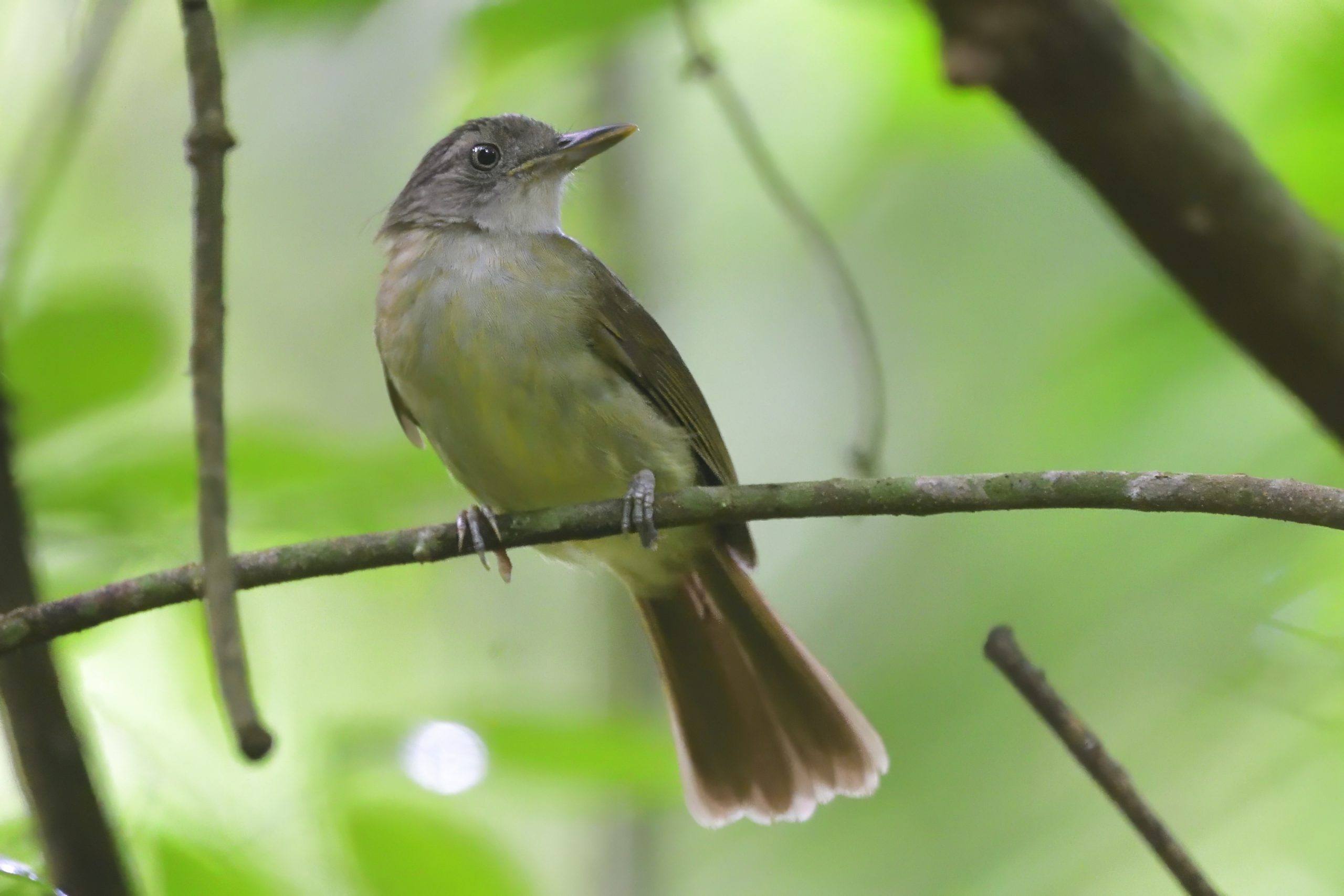
White-throated Greenbul, Phyllastrephus albigularis (Picture Lifer)

Red-capped Robin-Chat, Cossypha natalensis

Slender-billed Greenbul, Stelgidillas gracilirostris

Yellow-throated Tinkerbird, Pogoniulus subsulphureus

Spotted Greenbul, Ixonotus guttatus

Northern Fiscal, Lanius humeralis

Black Bishop, Euplectes gierowii
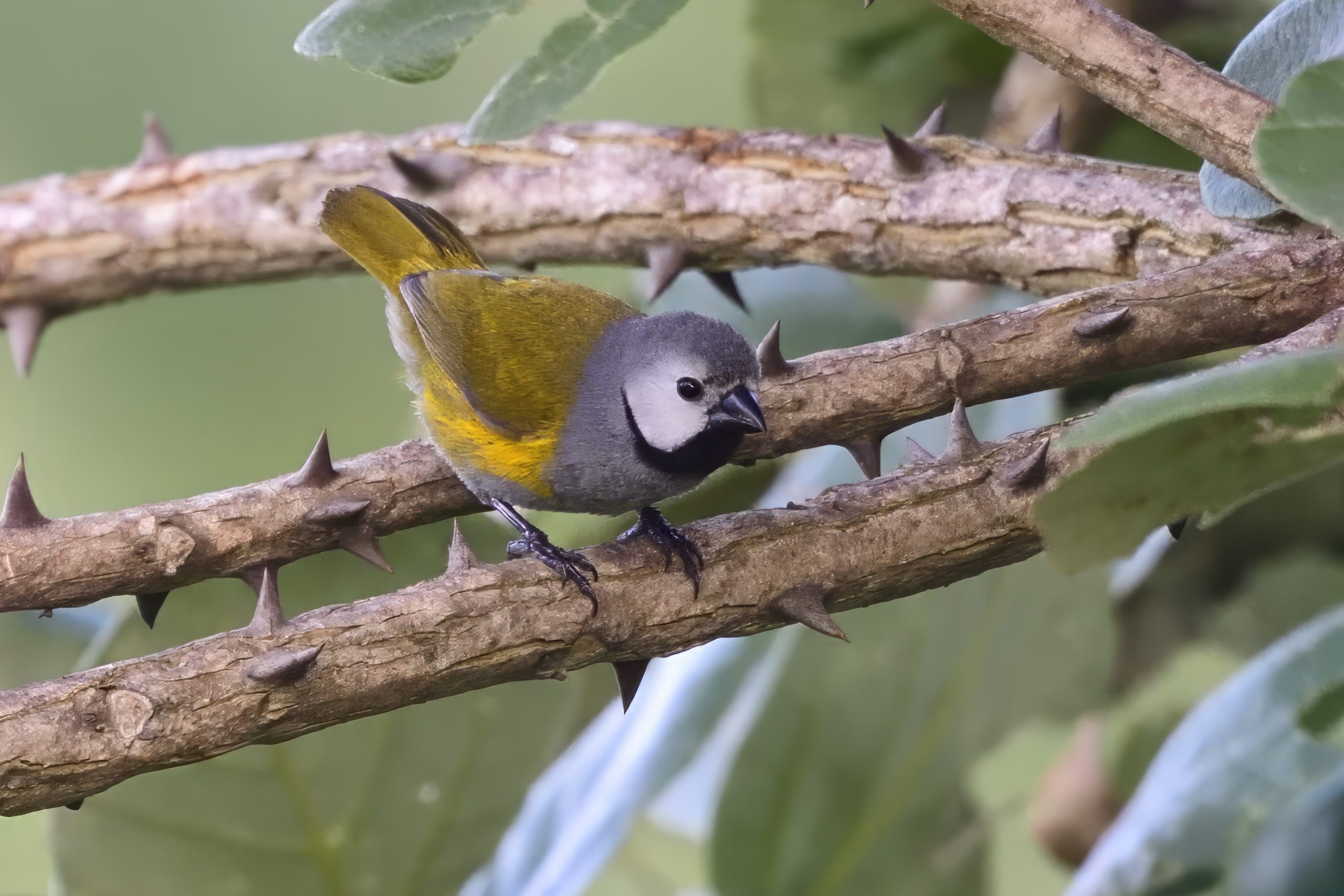
Grey-headed Oliveback, Delacourella capistrata – Picture Lifer

Photographing the Oliveback in Masvindi

Yellow-mantled Widowbird, Euplectes macroura
Day 4, Friday, May 12, 2023: Masvindi to Royal Mile to Semuliki National Park
We left Masvindi early and met our guide by the entrance to Royal Mile which is a part of Budongo Forest. Last time I visited the forest I were quite disappointed, but this time, the forest really performed. Here are some of the species we observed: Scaly-breasted Illadopsis, Rufous-crowned Eremomela, Brown Illadopsis, Buff-throated Apalis, Grey Parrot, Grey Longbill, White-breasted Nigrita, Jameson´s Wattle-eye, Grey-throated Tit-Flycatcher, African Dwarf Kingfisher, Brown-eared Woodpecker, Uganda Woodland Warbler, Nahan´s Partridge (Picture Lifer), Brown-chested Alethe, Red-bellied Paradise Flycatcher, DuskyTit, Lemon-bellied Crombec (Lifer), Speckled Tinkerbird, Chestnut-capped Flycatcher (Picture Lifer), Dusky Long-tailed Cuckoo, Toro Olive Greenbul, Black-necked Weaver, Yellow-whiskered Greenbul, Ituri Batis (Lifer), Fraser´s Forest Flycatcher (Lifer), Western Oriole, Spotted Greenbul, Little Grey Greenbul, Olive-green Camaroptera and Black Sparrowhawk. We were out of the forest at 12:00 exactly since we had a long drive ahead of us to Semuliki National Park. On the way out, we saw Brown Twinspot and Long-crested Eagle. We drove on and came to Semuliki late in the afternoon. No time for birding, just relax, shower up and have dinner.
Some pictures from Day 4:

White-breasted Nigrita, Nigrita fusconotus

African Dwarf Kingfisher, Ispidina lecontei

Rufous-crowned Eremomela, Eremomela badiceps

Nahan´s Partridge, Ptilopachus nahani – Picture Lifer
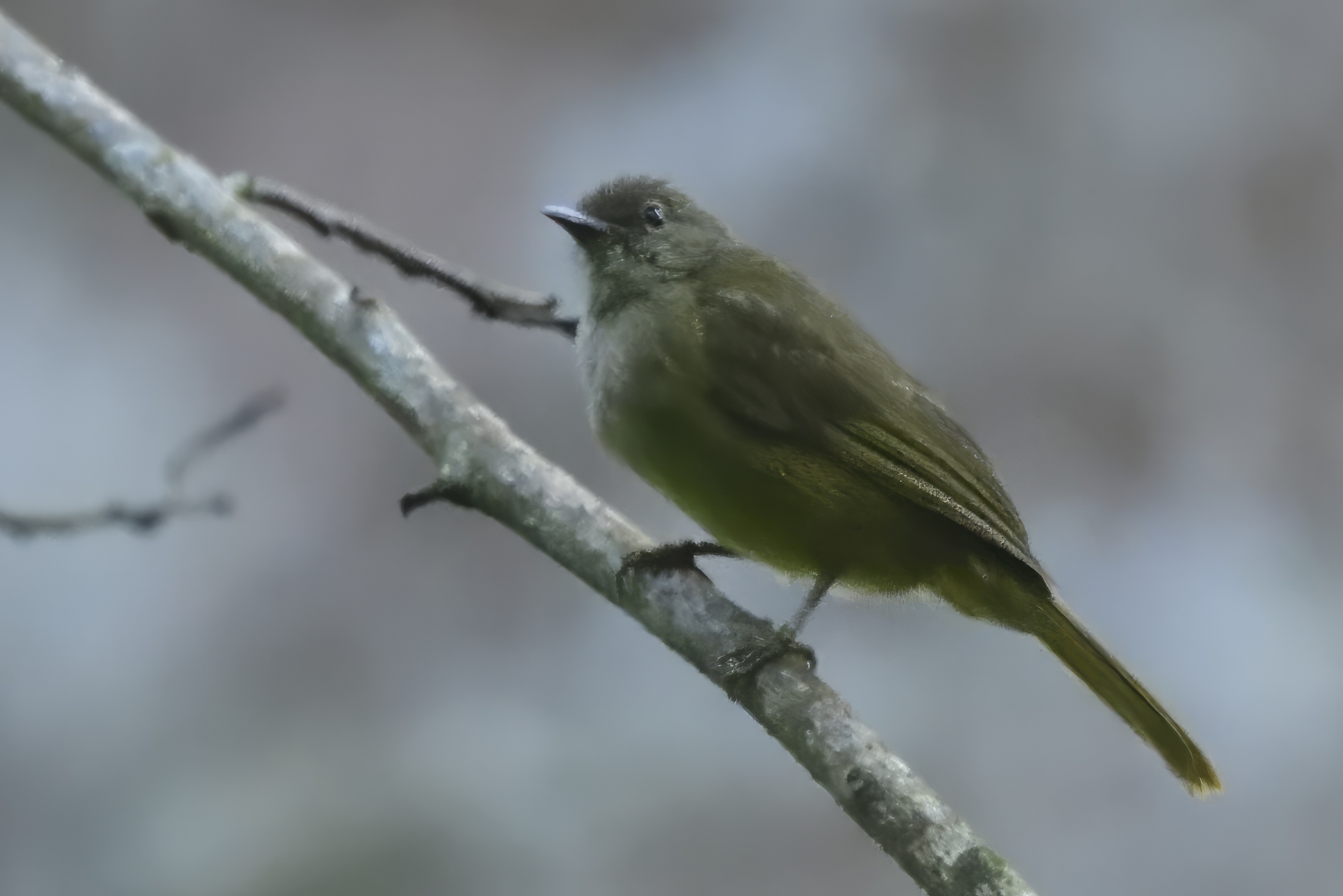
Little Grey Greenbul, Eurillas gracilis

Attracting a Butterfly in Royal Mile

Red-bellied Paradise Flycatcher, Tersiphone rufiventer

Lemon-bellied Crombec, Sylvietta denti – Lifer

Chestnut-capped Flycatcher, Erythrocercus mccallii – Picture Lifer

Fraser´s Forest Flycatcher, Fraseria ocreata – Lifer

Yellow-crested Woodpecker, Chloropicus xantholophus

Western Oriole, Oriolus brachyrynchus
Day 5, Saturday, May 13, Semuliki National Park
We went to the registration office and met our ranger/guide. We quickly started birding going out to one of the hot springs. Some of the birds we registered on that path: Fraser´s Rufous Thrush, Palm-nut Vulture, African Green Pigeon, Winding Cisticola, African Olive Pigeon, Thick-billed Weaver, Intermediate Egret, White-spotted Flufftail, Orange-cheeked Waxbill (One of my targets for a picture, but dipped), and Purple-headed Starling. When we returned to the car, we had great views of a male Black-casqued Hornbill. On the way to our next (very muddy path), we picked up: Red-faced Cisticola, Vieillot´s Black Weaver, Black-and-white Mannikin, Piping Hornbill, African Pied Hornbill and Olive-bellied Sunbird. We were now at the entrance of the famous Kirumia Trail. Last time I had excellent birding on that trail, so expectations were high. We started ticking birds: Woodland Kingfisher, Red-tailed Bristlebill, Broad-billed Roller, Yellow-browed Camaroptera (Lifer), Great Blue Turaco, Yellow-billed Barbet, Crested Malimbe, Jameson´s Wattle-eye, Xavier´s Greenbul, Red-tailed Greenbul, African Emerald Cuckoo, Hairy-breasted Barbet, Blue-headed Coucal, Green Crombec, Yellow Longbill (Still no pictures), Velvet-mantled Drongo, African Thrush, Western Nicator, White-breasted Nigrita, Brown-eared Woodpecker, Western Oriole, Lowland Sooty Boubou, Tambourine Dove, Black-billed Turaco and Red-billed Dwarf Hornbill. We had now reached the spot where we turned last time, but our ranger wanted to continue. The path for 700 meters were almost knee deep mud, but we carried on. Some of the new birds we explored: Blue-throated Roller, Black Bee-eater, Banded Prinia (Picture Lifer), Forest Robin, Fire-crested Alethe, Green Hylia, Yellow-whiskered Greenbul, Speckled Tinkerbird, White-thighed Hornbill and Dusky Long-tailed Cuckoo. We had now reached a pond with a bridge over. No Hartlaub´s Duck and no Yellow-footed Flycatcher. We waited for a long while before we started our way back. We only observed 3 species on the way back before a torrential storm hit us: Blue-headed Crested Flycatcher (Picture Lifer), Dwarf Bittern and Rufous-bellied Helmetshrike (Lifer). The rain was pouring down and we we were quite wet when we finally reached the car. We went back to camp, had a shower and dinner.
Some pictures from Day 5:

Black-and-white Mannikin, Spermestes bicolor

Crested Malimbe, Malimbus malimbicus

Yellow-browed Camaroptera, Camaroptera superciliariaris – Lifer
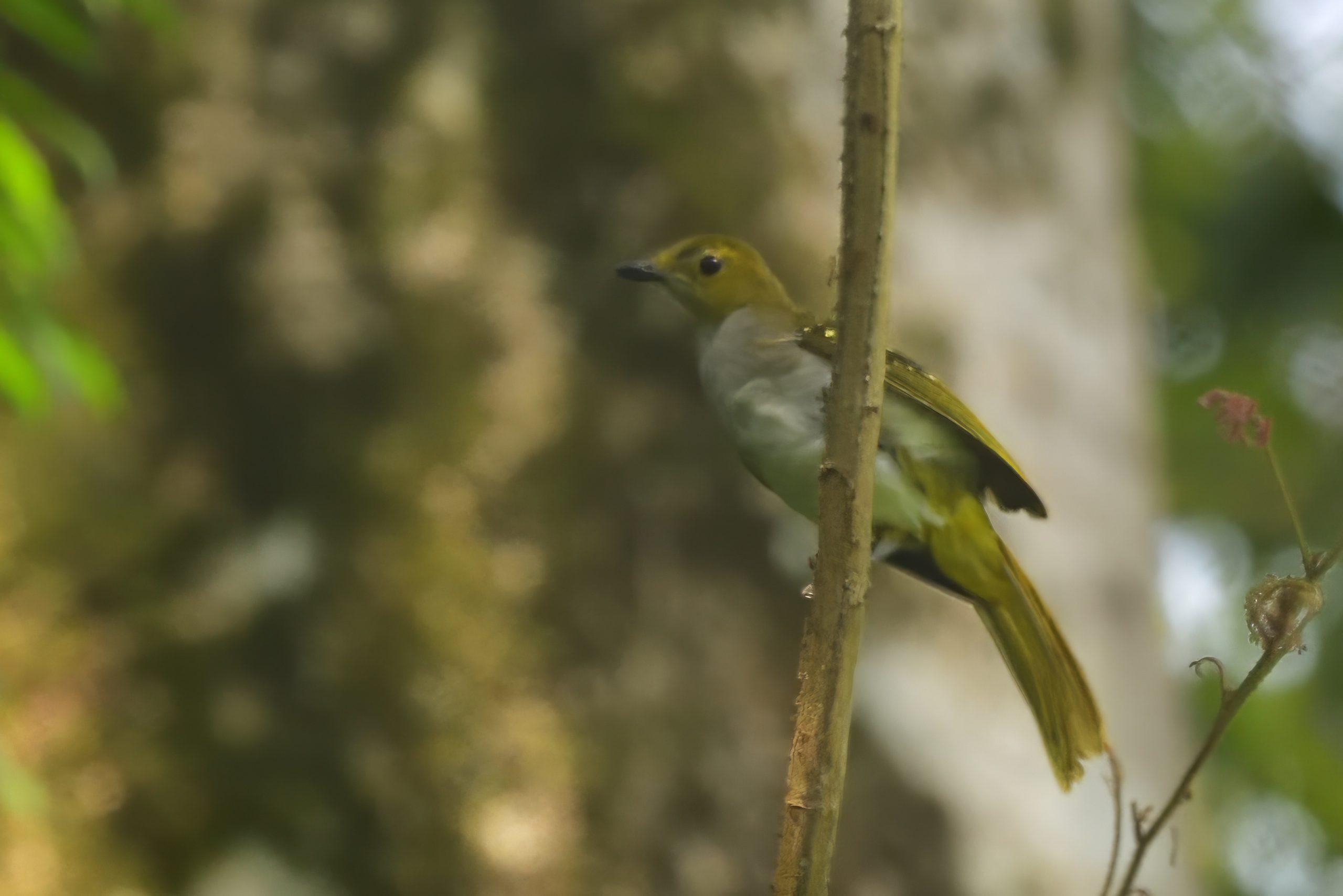
Western Nicator, Nicator chloris

Blue-throated Roller, Eyrostomus gularis

700 meters of this mud in Semuliki

Banded Prinia, Prinia bairdii – Picture Lifer

Black Bee-eater, Merops gularis

The bridge were we turned on the Kirumia trail

Blue-headed Crested Flycatcher, Throchocercus nitens – Picture Lifer

Rufous-bellied Helmetshrike, Prionops rufiventris – Lifer

An unwelcome huge spider in my room in Semuliki
Day 6, Sunday May 14, Semuliki National Park
Giraffe were not feeling good that morning, so the ranger and I went alone. We checked again the path to one of the hot springs, saw the Orange-cheeked Waxbills again, but still no pictures. We continued to the Kirumia trail. Here are some of the birds we found before lunch: Red-headed Bluebill, Blue-throated Brown Sunbird, Green White-eye, Green Crombec, Chestnut-capped Flycatcher. Two African Pitta EA Lifer, but no pictures), Red-bellied Paradise Flycatcher, Grey-headed Sunbird, Rufous-sided Broadbill, Lowland Sooty Boubou (Picture Lifer), Yellow-eyed Bristlebill (Lifer, but no picture), Western Bronze-naped Pigeon, Blue-shouldered Robin-Chat, Green Twinspot and Blue-breasted Kingfisher. I got to camp for lunch. Giraffe were feeling better, but we decided to take it a little easier that afternoon. We drove up the old road to Fort Portal. Here are some of the birds we observed: Black-bellied Firefinch (Lifer), Northern Puffback, Brown-backed Scrub-Robin, Grey-headed Nigrita, Moustached Grass Warbler, Western Black-headed Batis, Blue-spotted Wood Dove, Ayre´s Hawk-Eagle, Bronzy Sunbird and Black-and-white Shrike Flycatcher. We reached camp just before dark. Showered and dinner.
Some pictures from Day 6:
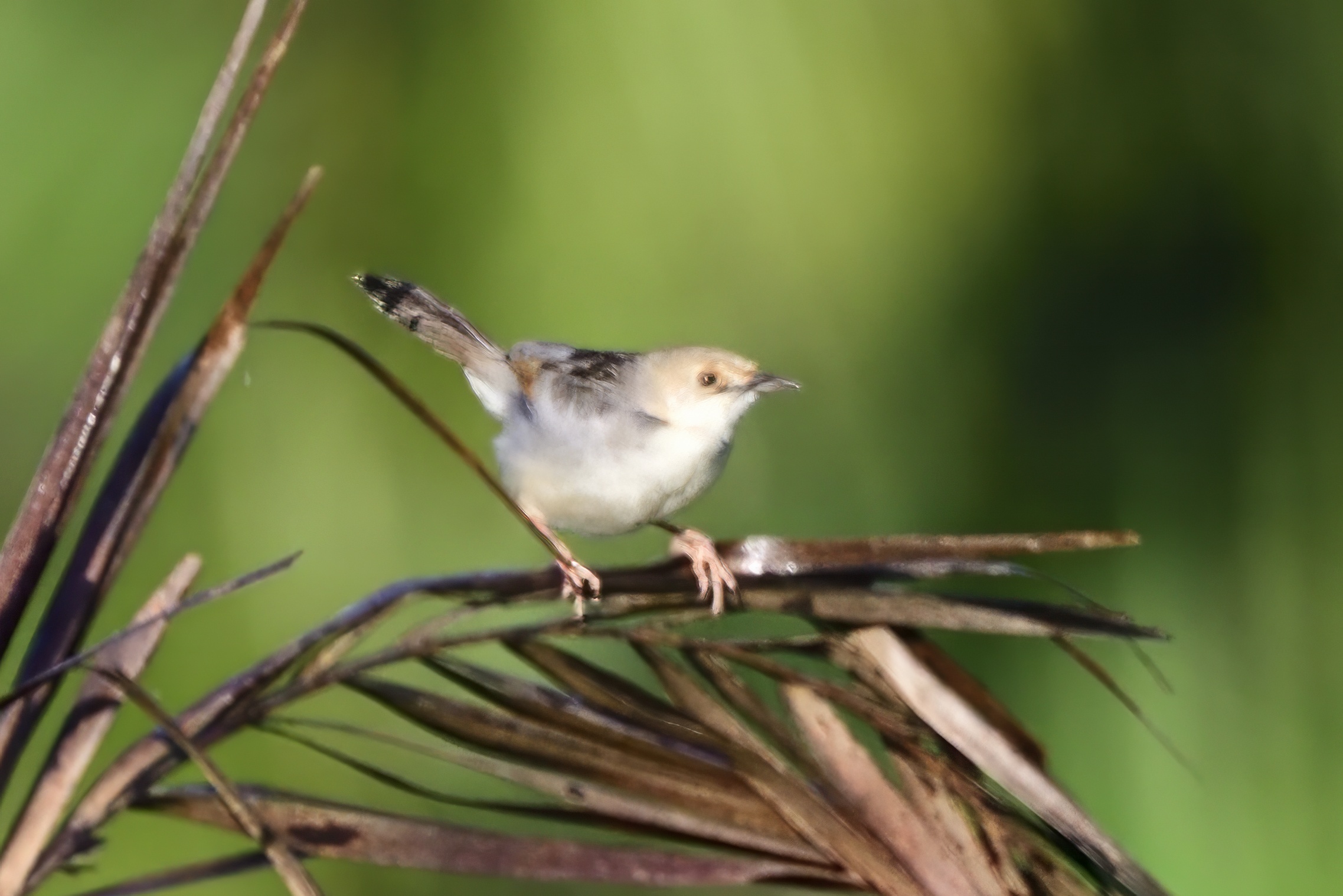
Winding Cisticola, Cisticola marginatus

Blue-throated Brown Sunbird, Cyanomitra cyanolaema
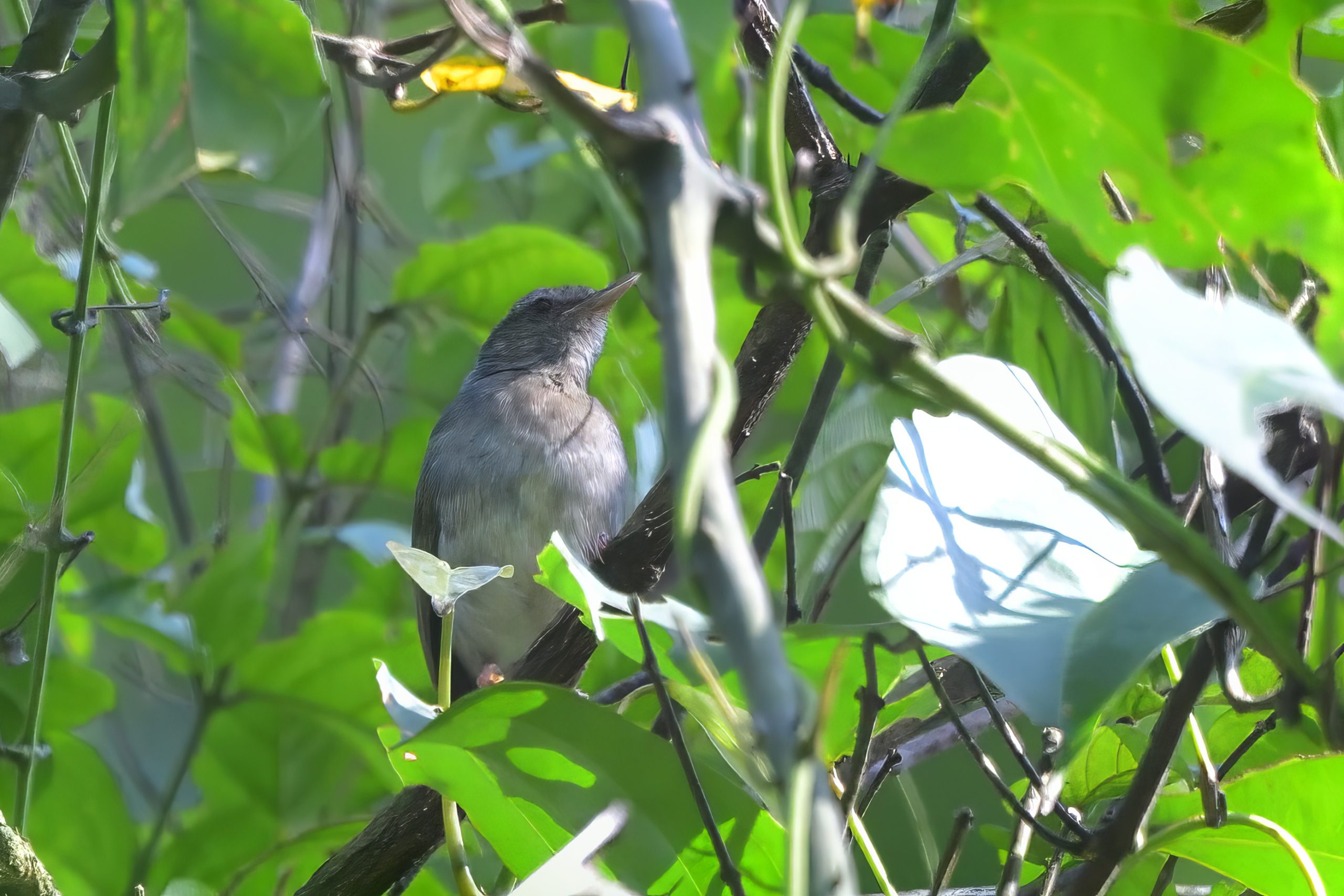
Green Crombec, Sylvietta virens
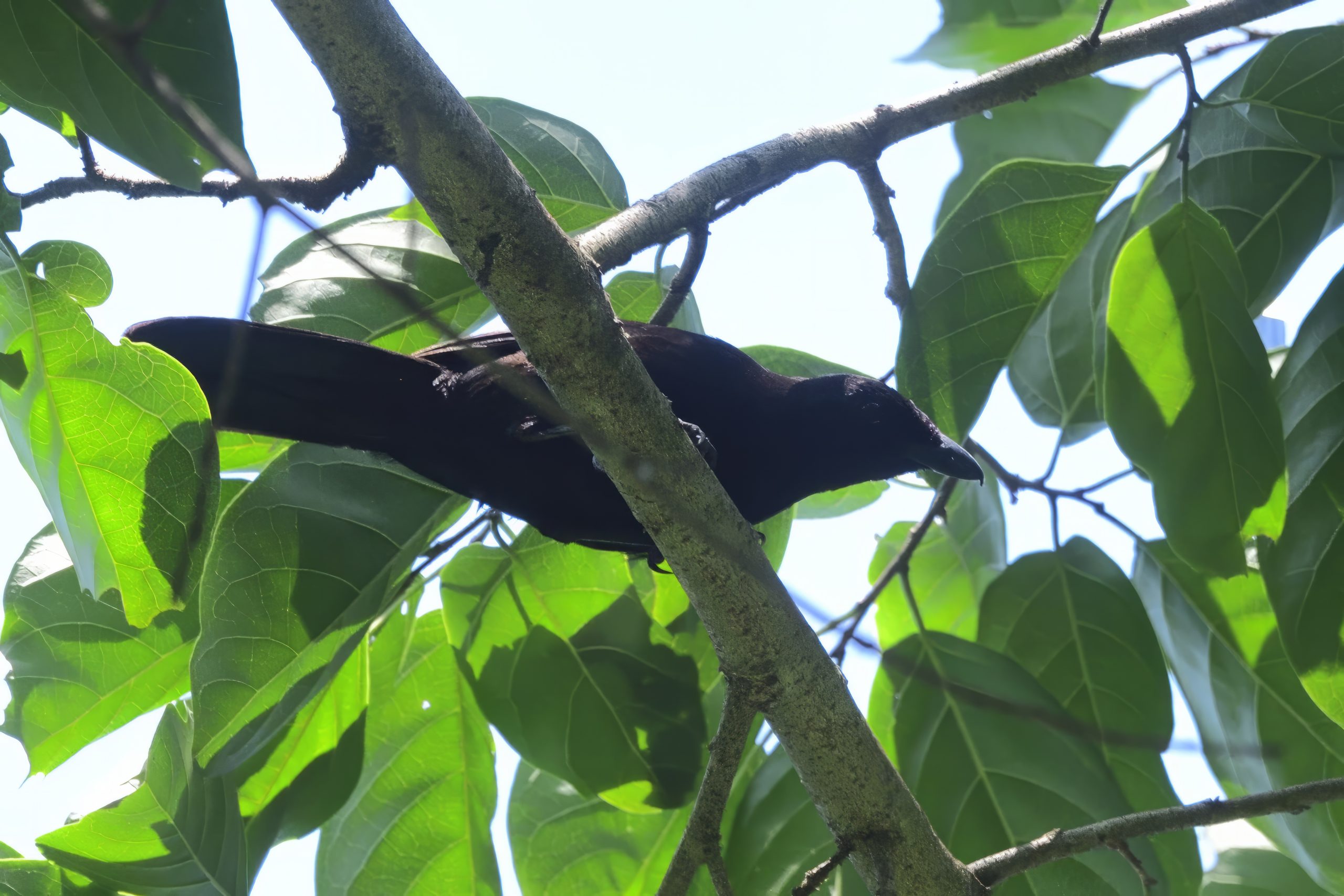
Lowland Sooty Boubou, Laniarius leuchorynchus – Picture Lifer

Breakfast in Semuliki, note the gum boots that came in very handy the day before

Blue-shouldered Robin-Chat, Cossyphia cyanocampter

Female Black-bellied Firefinch, Lagnonosticta rara – Lifer

Black-bellied Firefinch, Lagnonosticta rara – Lifer

Western Black-headed Batis, Batis erlangeri

Ayre´s Hawk-Eagle, Hieraaetus ayresii
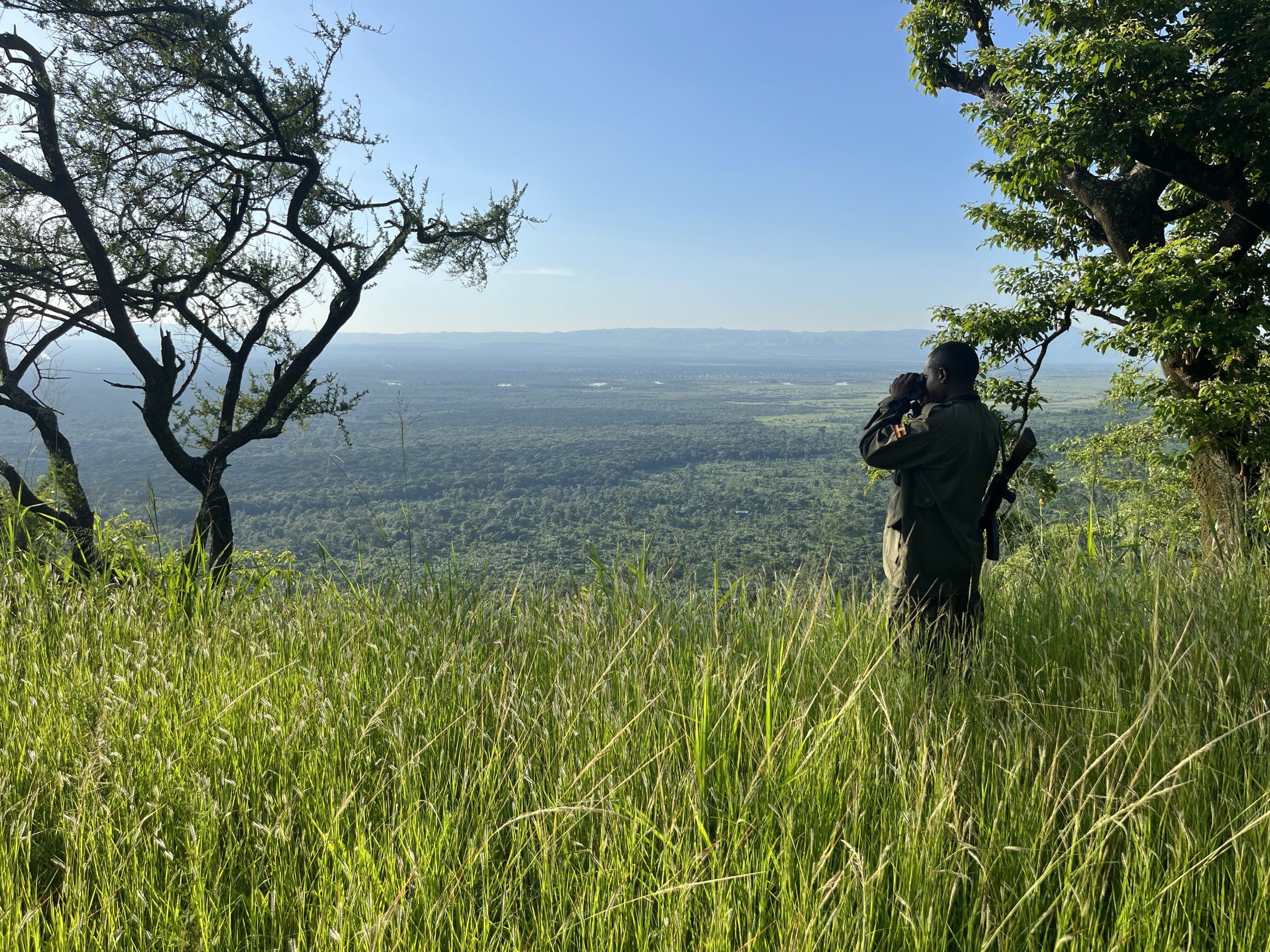
View from the Old Fort Portal road with DRC on the other side of the river.
Day 7, Monday, May 15, Semuliki National Park
Our last day in Semuliki National Park. That day, we were going the Red-tailed Monkey trail. Before we left, I discovered that one of my wheels were leaking from the center, so I were planning to hook up with a mechanic in Fort Portal for the morning after. I took a picture and sent to the mechanic in Kampala. He said I needed to change a seal and he found a mechanic for me in Fort Portal for the day after. We started the trail and stopped briefly by one of the hot springs, before that we had a very nice encounter with a Fire-crested Alethe. We walked on and saw a Blue-billed Malimbe (Lifer, no pictures). A little later we managed to get a Yellow-throated Nicator close (Picture Lifer). We reached the forest and heard a Red-rumped Tinkerbird calling, but could not locate it. At the same time a Forest Scrub-Robin were calling, but it would not show itself. We had good views of a Blue-headed Crested Flycatcher, but I could not improve on my previous pictures. The Dusky Long-tailed Cuckoo were calling everywhere and Giraffe got a good view. I finally managed to get a record shot of a Grey-headed Sunbird (Picture Lifer). We walked until we met a river. The bridge were washed away, so we stopped for breakfast. On the way back, we could not find any more new species. We had lunch in camp. I opened the tent to dry it out. We agreed to meet our ranger at 4PM for a walk on the path from camp. Our big target were Bate´s Nightjar which we dipped on. Instead we were rewarded by very good views of a Yellow-throated Cuckoo (Lifer) . Other birds: White-crested Hornbill, Swamp Palm Bulbul and Yellow-spotted Barbet. We returned to camp said our goodbye to Moses our ranger for the last 3 days. Showered and had dinner. We agreed on an early departure the day after since we had a long way to go to Bwindi impenetrable forest and the small village of Buhoma.
Some pictures from Day 7:

A broken seal

Fire-crested Alethe, Alethe castanea

At the hot springs
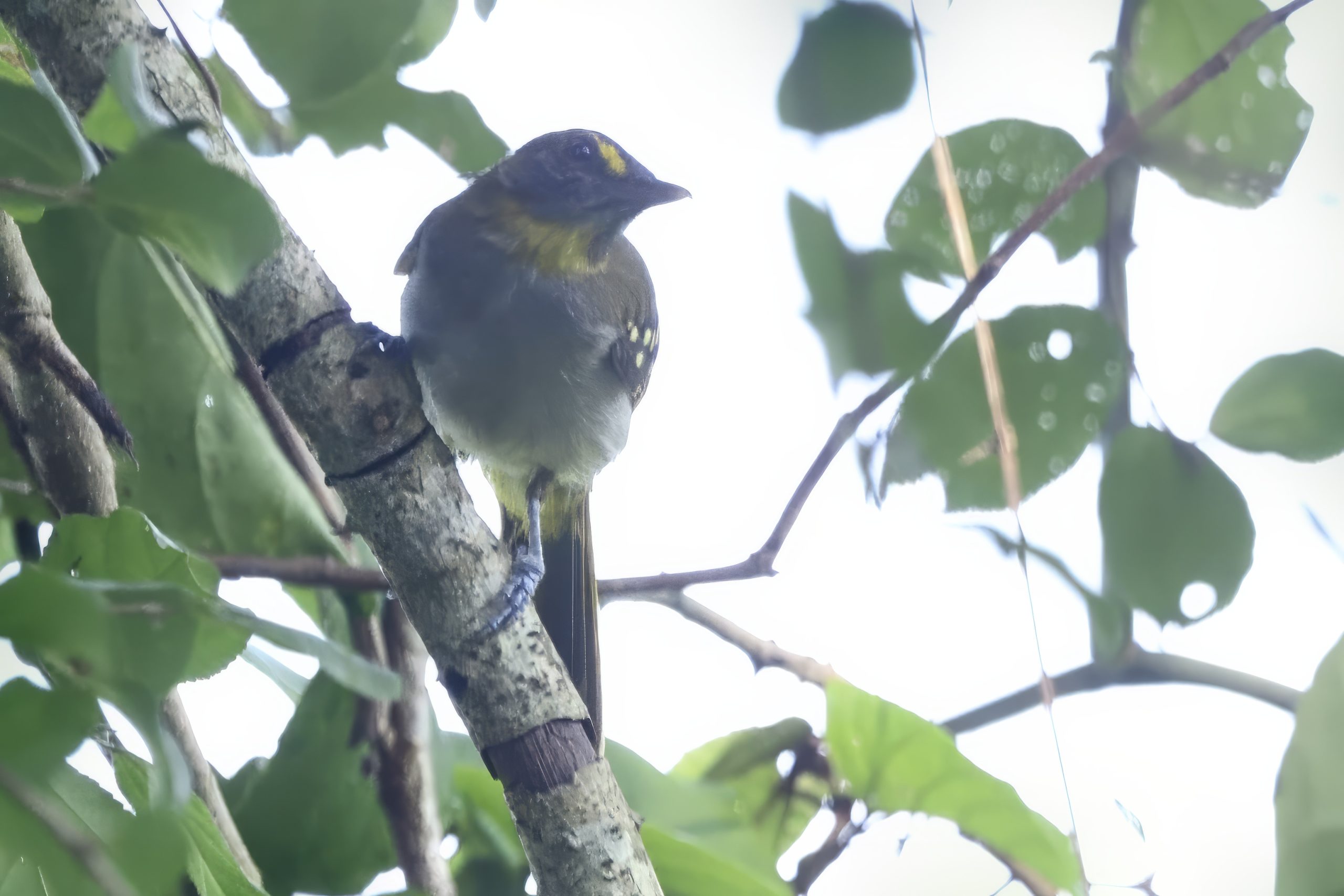
Yellow-throated Nicator, Nicator vireo – Picture Lifer
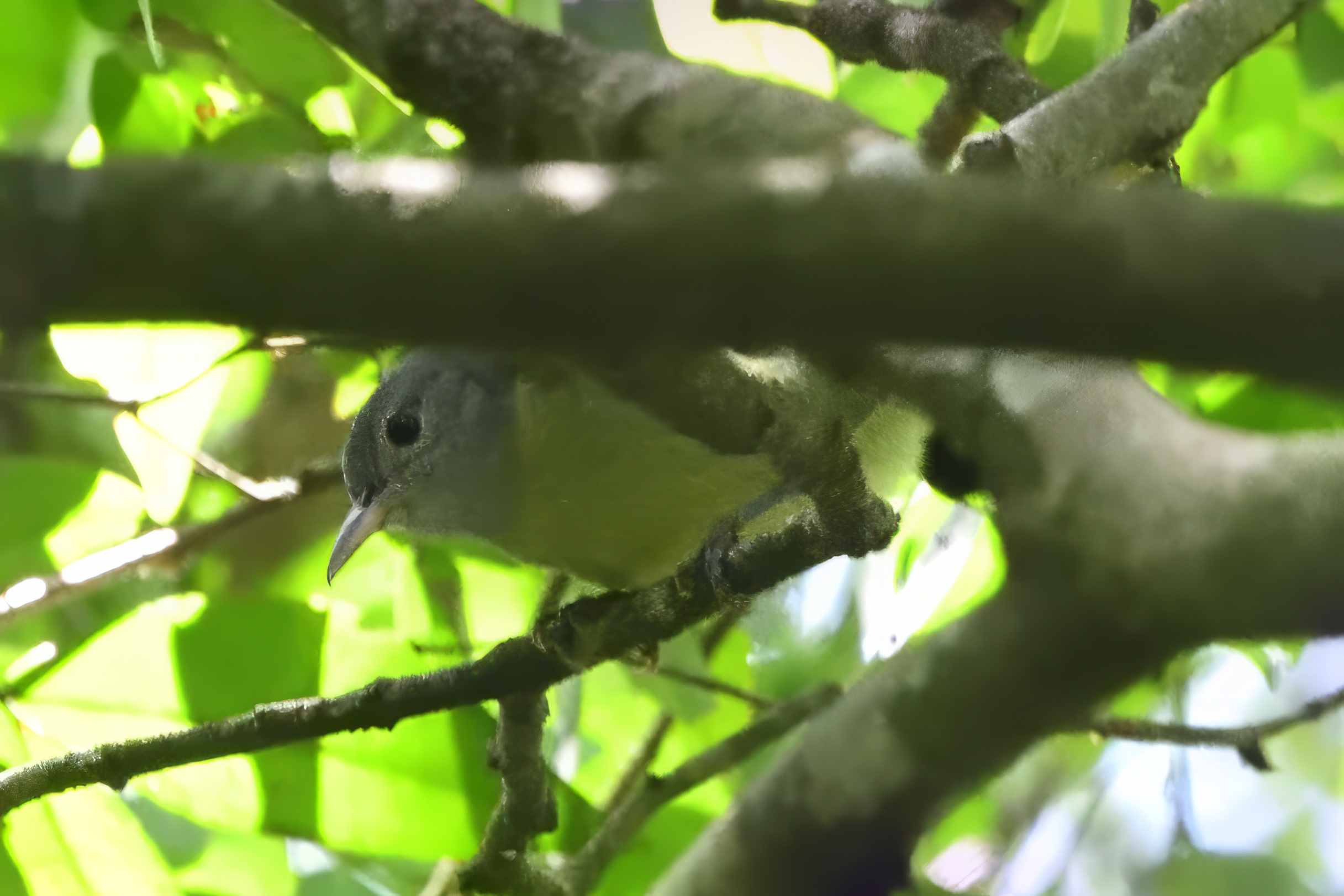
Grey-headed Sunbird, Deleornis axillaris – Picture Lifer
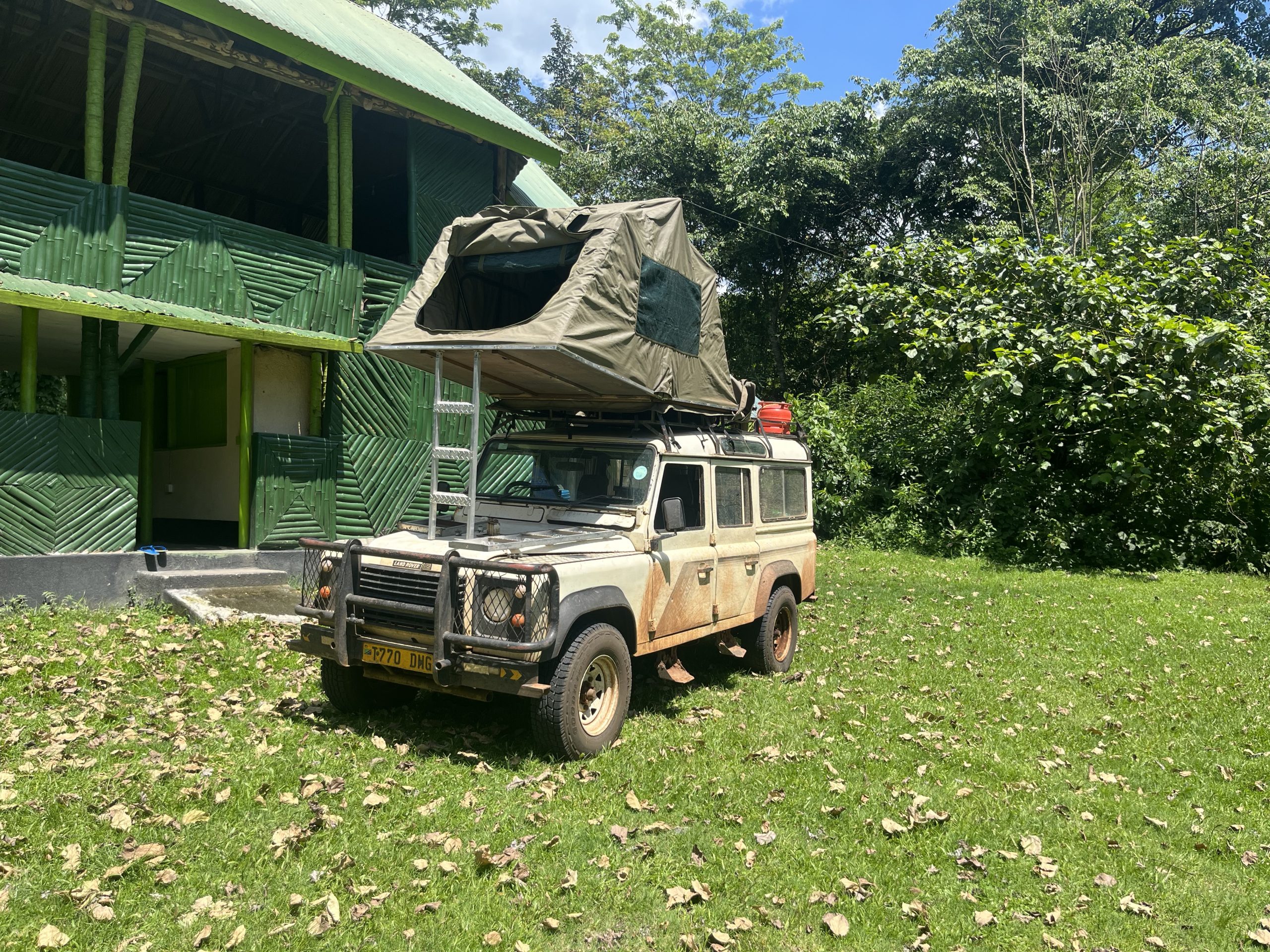
Drying the tent during lunch

Yellow-throated Cuckoo, Chryssococcyx cupreus – Lifer
Day 8, Tuesday, May 16, Semulike via Fort Portal to Buhoma, Bwindi Impenetrable Forest.
We started early and on the way up the steep slope to Fort portal, I heard a popping sound from the engine and I started loosing power. We reached the garage and found that the Turbo pipe were broken. The mechanic fixed the broken seal in the wheel and replaced the broken pipe. While waiting for the mechanic to finish, Giraffe went and got us breakfast. While eating, a Black-crowned Waxbill paid us a visit. It is Africa, so the repair took a little longer than expected, but eventually we were on the way to Buhoma. The road goes through a nasty section of Queen Elisabeth National Park. More than 80 km on a very bad dirt road. I were probably driving a little fast and then I heard a weird noise. I stopped and saw that all cabling to the rear of the car had come loose and were wrapped around the front propeller shaft. I removed the wires and we continued. Not so long after, the car started heating. I opened the bonnet and found that the water pipe that were normally strapped to the turbo pipe had been broken since it had not been strapped back on to the Turbo pipe. It had been rubbing against the fan belt. I had a little tape and did a temp fix until we got to the nearest village where we managed to give it a better fix. Still we were struggling on the way to Buhoma. We acquired some super glue and more tape on the way. When I opened to fix, I saw that the new Turbo pipe that were installed in Fort Portal had also broken. I fixed both pipes with super glue and tape. Robert were waiting for us and had found us a lodge in Buhoma. We had time for a short bird walk outside the park and picked up quite a few species: African Blue Flycatcher, Bronzy Sunbird, Black-necked Weaver, Cinnamon-chested Bee-eater, Black-and-white-casqued Hornbill, Black-and-white Shrike-Flycatcher, Yellow-rumped Tinkerbird, Grey-winged Robin-Chat, Cape Wagtail, Dusky-blue Flycatcher, Northern Double-collared Sunbird, African Paradise Flycatcher, Green-headed Sunbird, Green Crombec, Olive Sunbird, Little Grey Greenbul, Black-faced Rufous Warbler, Red-tailed Greenbul, Honeyguide Greenbul, Cabanis´s Greenbul, Black-billed Turaco, Many-colored Bushshrike, African Goshawk, Baglafecht Weaver and African Thrush. We were back at the lodge, cleaned up and had a nice dinner.
Some pictures from Day 8:
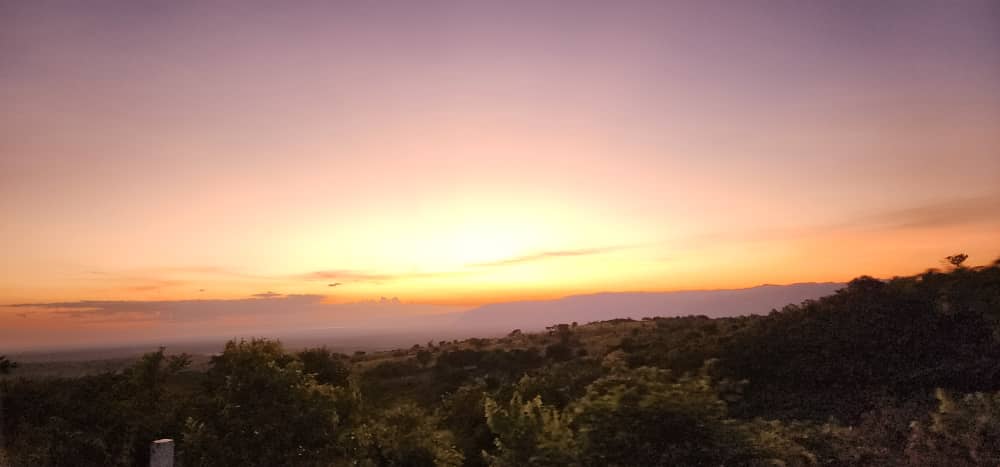
Sunrise on the road from Semuliki National Park to Fort Portal

Black-crowned Waxbill, Estrilda nonnula

Robert and me ready for birding

Cape Wagtail, Motacilla capensis

Little Grey Greenbul, Eurillas gracilis

Many-colored Bushshrike, Chlorophoneus multicolor
Day 9, Wednesday, May 17, Bwindi impenetrable Forest Buhoma
We started early in order to register for entrance to the forest. Here are some of the birds we saw on the trail: White-necked Raven, Brown-throated Wattle-eye, White-tailed Ant Thrush, Chapin´s Flycatcher, Scaly-breasted Illadopsis, White-headed Wood Hoopoe, Black-throated Apalis, Equatorial Akalat, Red-throated Alethe, Fraser´s Rufous Thrush, African Broadbill, Mountain Oriole, Yellow-spotted Barbet, Red-tailed Bristlebill, Grey-throated Tit Flycatcher, Stuhlmann´s Starling, Olive-green Camaroptera, Ansorge´s Greenbul, Bar-tailed Trogon, Kivu (Abyssinian) Ground Thrush, Western Crested Guineafowl, Tambourine Dove, White-bellied Robin-Chat, Abyssinian Thrush, Little Green Sunbird (Lifer), Elliot´s Woodpecker, Red-faced Woodland Warbler, Chestnut Wattle-eye and Mountain Masked Apalis. We had now reached our breakfast spot that lucky for us were under roof. When we entered our shelter, it started raining. We ate and the rain abated a little bit, but as soon as we stepped out, the rain came down very hard. We were far inside the forest and the only sensible thing to do were to walk as fast as possible back to camp. The road were a river so when we finally came back to camp we all looked like drowned rats. In the afternoon, the rain stopped and we managed to go out and do some birding close to camp. Here are some of the birds we saw: Snowy-crowned Robin-Chat, Bocage´s Bushshrike, Brown-capped Weaver, White-eyed Slaty Flycatcher, White-breasted Nigrita, Speckled Tinkerbird, Ross´s Turaco, Black Saw-wing, Green-throated Sunbird and Black-billed Weaver. We were now back in camp and cleaned up and had dinner.
Some pictures from Day 9:

Green White-eye, Zosterops stuhlmanni

Kivu (Abyssinian) Ground Thrush, Geokichla piaggiae race tanganjicae

Elliot´s Woodpecker, Dendropicos elliotii

Mountain Masked Apalis, Apalis personata

African Blue Flycatcher, Elminia longicauda

Dusky-blue Flycatcher, Muscicapa comitata

Snowy-crowned Robin-Chat, Cossypha niveicapilla
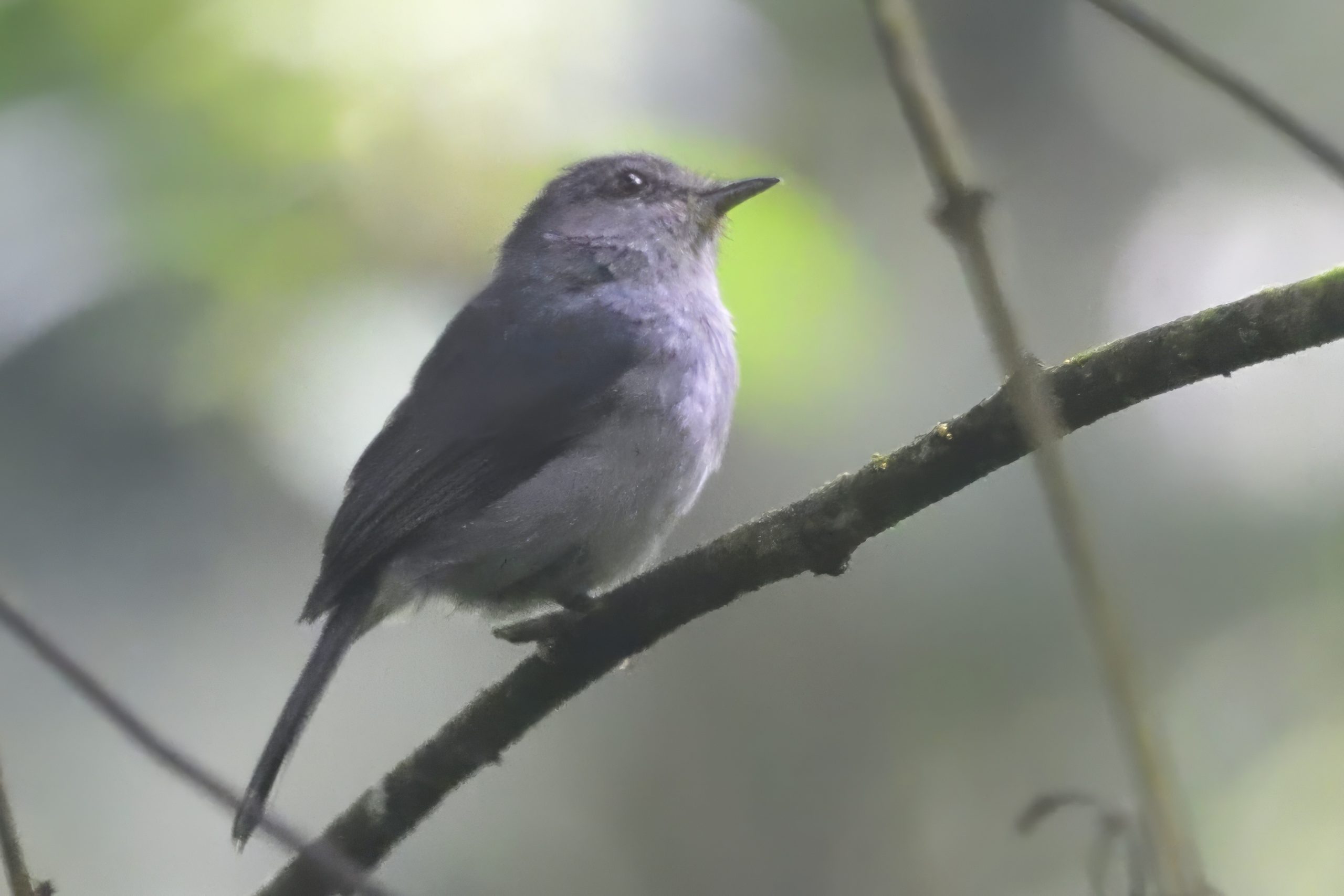
Grey-throated Tit-Flycatcher, Myioparus griseigularis

Northern Double-collared Sunbird, Cinnyris reichenowi
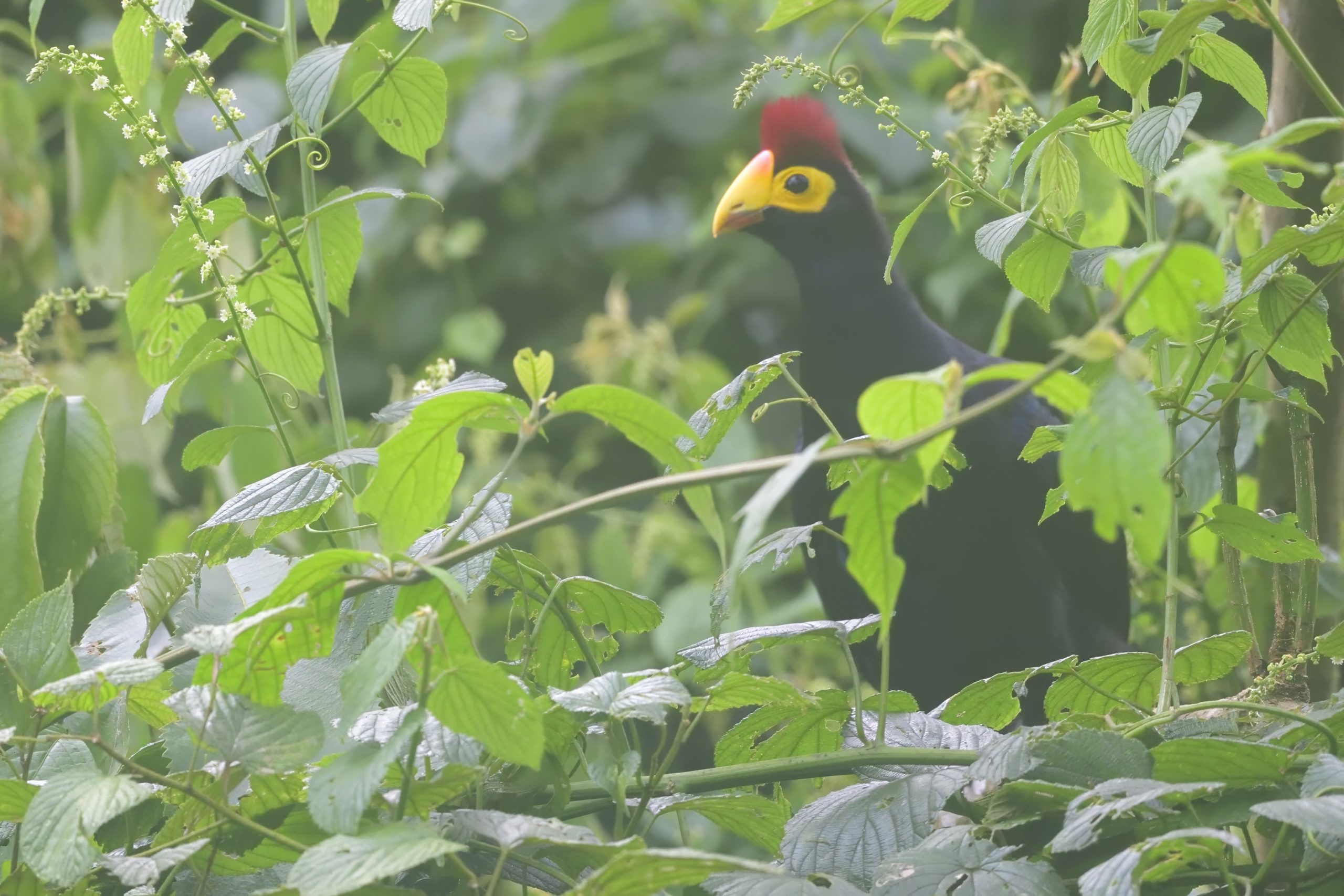
Ross´s Turaco, Tauraco rossae

Female Green-headed Sunbird, Cyanomitra verticalis
Day 10, Thursday, May 18, Bwindi impenetrable Forest, Buhoma
The weather looked a lot better that morning and we were ready for a walk. We took another path that morning and here are some of the interesting birds we registered in the Buhoma section of Bwindi: Streaky Seed-eater, Pink-footed Puffback, Toro Olive Greenbul, Red-tailed Greenbul, Grey-throated Barbet, Great Blue Turaco, Black-faced Rufous Warbler, Honeyguide Greenbul, Red-headed Malimbe, Stuhlmann´s Starling, Willcock´s Honeyguide, Dusky Tit, Grey Apalis, Dusky Long-tailed Cuckoo, White-tailed Ant Thrush, Mountain Illadopsis, Lühder´s Bushshrike, White-browed Crombec, Kakamega Greenbul, Sooty Flycatcher (Picture Lifer), Black Bee-eater, Petit´s Cuckooshrike, Grey-headed Nigrita and Blue-shouldered Robin-Chat. We were back from the walk in time for a Late lunch. I gave Robin a couple of hours off and we met again late afternoon. We did not go into the park, but birded around the garden of the lodge and near the entrance to the park in order to improve on some of the pictures from earlier. We cleaned up and had dinner. I paid for our stay and agreed to meet Robert early the day after. All in all Buhoma were quite disappointing this year compared to last time I were there. The forest were very quiet and the rain the day before did not make things better.
Some pictures from Day 10:

Dusky-blue Flycatcher, Muscicapa comitata

Entrance to the Forest

Red-tailed Greenbul, Criniger calurus

Grey-throated Barbet, Gymnobucco bonapartei

Bar-tailed Trogon, Apoloderma vittatum

Red-headed Malimbe, Malimbus rubricollis
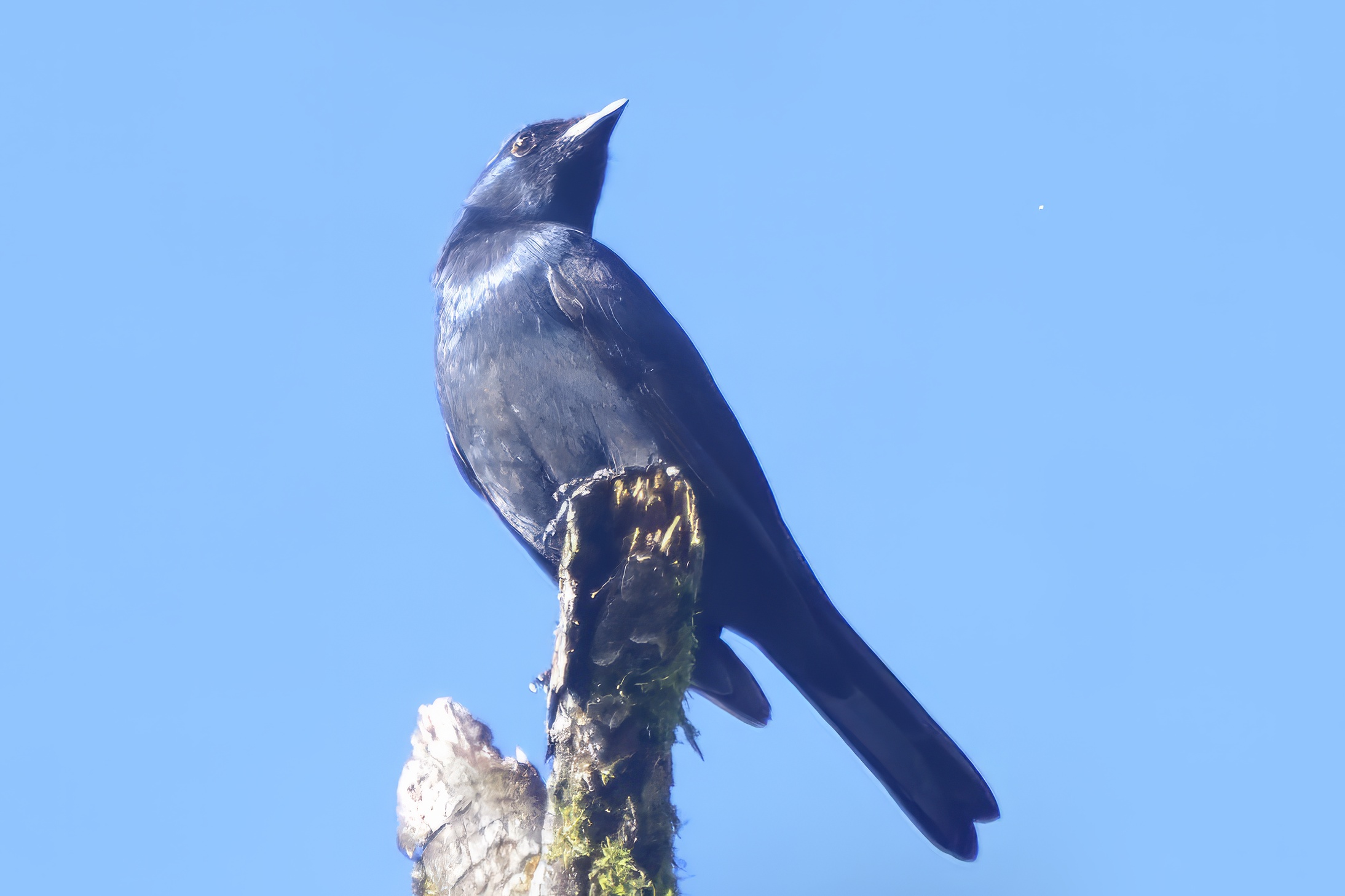
Female Stuhlmann´s Starling, Poeoptera stuhlmanni

Honeyguide Greenbul, Baeopogon indicator

Equatorial Akalat, Sheppardia aequatoralis – Endemic to East Africa
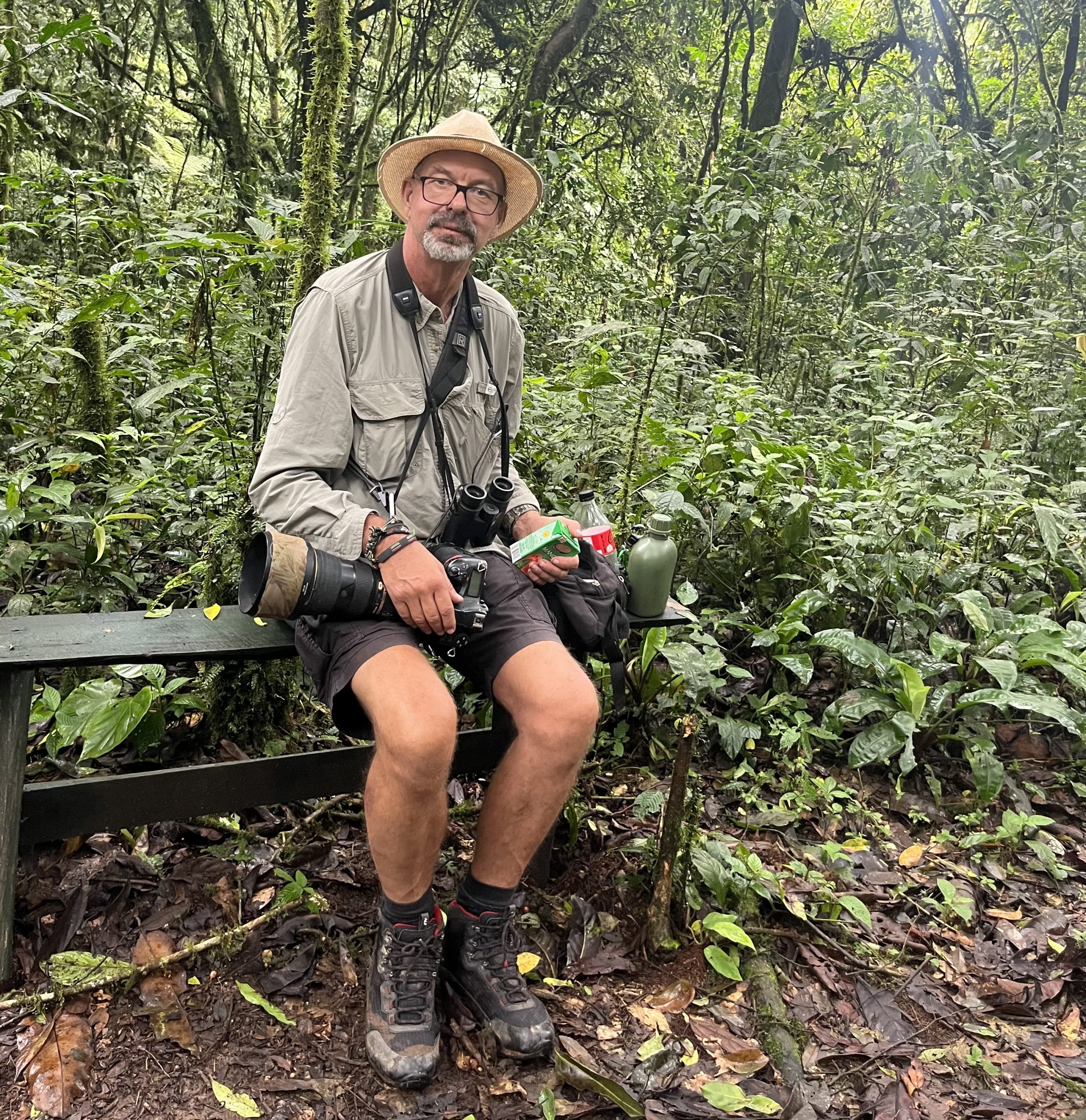
Breakfast in Bwindi Impenetrable Forest.

Sooty Flycatcher, Muscicapa infuscata – Picture Lifer

Female Northern Double-collared Sunbird, Cinnyris reichenowi

Green-headed Sunbird, Cyanomitra verticalis

Green-throated Sunbird, Chalcomitra rubescens

Green White-eye, Zosterops stuhlmanni
Day 11, Friday, May 19, Buhoma to Ruhija, Bwindi impenetrable Forest
We started early in the morning and this was the test that my car repair had succeeded because we were climbing 800 meters from Buhoma to Ruhija. The car performed very well and I was very proud of myself. We stopped and birded “The Neck” properly with Robert as a guide. Last time, we only did short stops since we did not have a local guide with us. Here are some of the birds we found: Pale Flycatcher, African Harrier-Hawk, Golden-breasted Bunting, Black Bee-eater, Cassin´s Hawk-Eagle, Northern Puffback, Willcock´s Honeyguide, Mountain Oriole, Toro Olive Greenbul, Brown-capped Weaver, Brown Illdopsis (Photo Lifer), Banded Prinia (Was a photo lifer a few days before), Crowned Eagle, Little Green Sunbird (Lifer a few days before, photo lifer that day), Chapin´s Flycatcher (Photo Lifer), African Shrike-Flycatcher, Red-headed Malimbe, Cassin´s Flycatcher, Yellow-spotted Barbet, Grey-throated Barbet and African Paradise Flycatcher. It was now almost noon and we drove the last few kilometers to Ruhija. Our Lodge were rustic, but comfortable. The food however were a catastrophe. Robert led us to a local restaurant in the village and I could have all the meat I wanted for a very low price. We met again at 15:00 and started birding on a path close to Ruhija. Here are some of the birds we found: Chestnut-throated Apalis, Rwenzori Apalis, Lühder´s Bushshrike, White-eyed Slaty Flycatcher, Mountain Masked Apalis, Bocage´s Bushshrike, Augur Buzzard, Klaas´s Cuckoo, White-tailed Blue Flycatcher, Regal Sunbird, Blue Malkoha, Red-faced Woodland Warbler, Grey Cuckoshrike, Cardinal Woodpecker and African Harrier-Hawk. The birding were extremely good, but Robert wanted to introduce us to another area further away from Ruhija. It was only a 5 – 6 km drive. We birded along the road and here are some of the birds we found: Rwenzori Hill Babbler, Olive-breasted Greenbul, Thick-billed Seed-eater, White-starred Robin, Kandt´s Waxbill, Doherty´s Bushshrike (Lifer), Handsome Francolin, Mountain Yellow Warbler and Black-billed Turaco. We returned to camp and had a terrible dinner. I retired early since there were a socket in my room. Much to my surprise, the socket were not connected to electricity, so I had to come back up to the restaurant to download pictures and charge gear.
Some pictures from Day 12:

Willcock´s Honeyguide, Indicator willcocki

Brown Illadopsis, Illadopsis fulvescens – Picture Lifer

Banded Prinia, Prinia bairdii

Chapin´s Flycatcher, Muscicapa lendu – Picture Lifer – Localised Endemic to East Africa

Cassin´s Flycatcher, Muscicapa cassini

Regal Sunbird, Cinnyris regius – Endemic to Albertine Rift Valley

Blue Malkoha, Ceuthmochares aereus
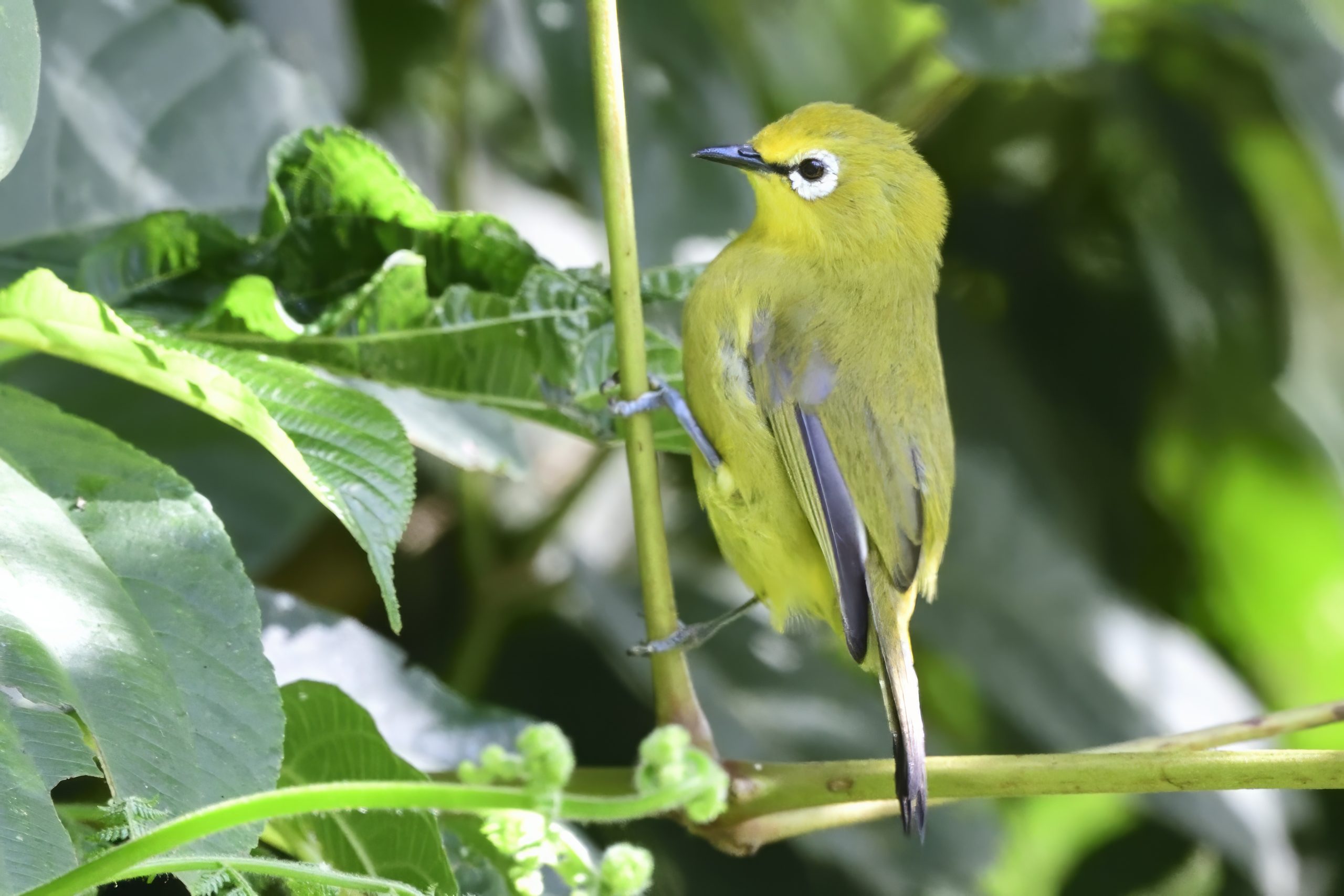
Green White-eye, Zosterops Stuhlmanni

Thick-billed Seed-eater, Chrithagra burtoni

Chubb´s Cisticola, Cisticola chubbi

Doherty´s Bushshrike, Telphorus dohertyi – Lifer – Endemic to East Africa
Day 12, Saturday, May 20, Bwindi Impenetrable Forest, Ruhija
This was the day for the big walk from Ruhija and down to the swamp where Robert´s brother, Gordon, had seen a Grauer´s Broadbill the day before. Gordon came along as well in order to secure my number one target for Bwindi. We were just one day late last time to find this bird. We started down the forest path and saw an amazing number of good birds: Rwenzori Apalis (Picture Lifer), Black-billed Turaco, Dusky Crimsonwing, Sharpe´s Starling, Balck-and-white-casqued Hornbill, Grauer´s Warbler (still no picture), White-headed Wood Hoopoe, Strange Weaver (Lifer), Blue-headed Sunbird (Picture Lifer), White-bellied Crested Flycatcher (Lifer), Albertine Sooty Boubou (Lifer), Grauer´s Broadbill (Lifer) Gordon also found the nest, White-browed Crombec, Chinspot Batis, Stripe-breasted Tit, Dwarf Honeyguide (Lifer), Olive-breasted Greenbul, White-eyed Slaty Flycatcher and White-chinned Prinia. We were up by the car before 13:00. As a bonus, we also so a Gorilla family on the walk without paying the extrordinary fee. We could not close our eyes when they were in the middle of the path? So that trip produced 5 real lifers (all with pictures and 2 picture lifers), what a walk. I was flying up the hill to the car fuelled by energy.
After lunch, Robert wanted to try another spot for Dusky Crimsonwing. We could not find the bird, we went back to the place we finished off the day before. Some of the birds we saw that afternoon: Yellow-crowned Canary, Mountain Illadopsis and Archer´s Ground Robin (Lifer, but no pictures). We went back to camp had a dubious meal and went early to rest.
Some pictures from Day 12:

Rwenzori Apalis, Oreolais ruwenzorii – Picture Lifer – Endemic to Albertine Rift Valley

Black-billed Turaco, Tauraco schuetti

Gorilla Baby

Gorilla Male
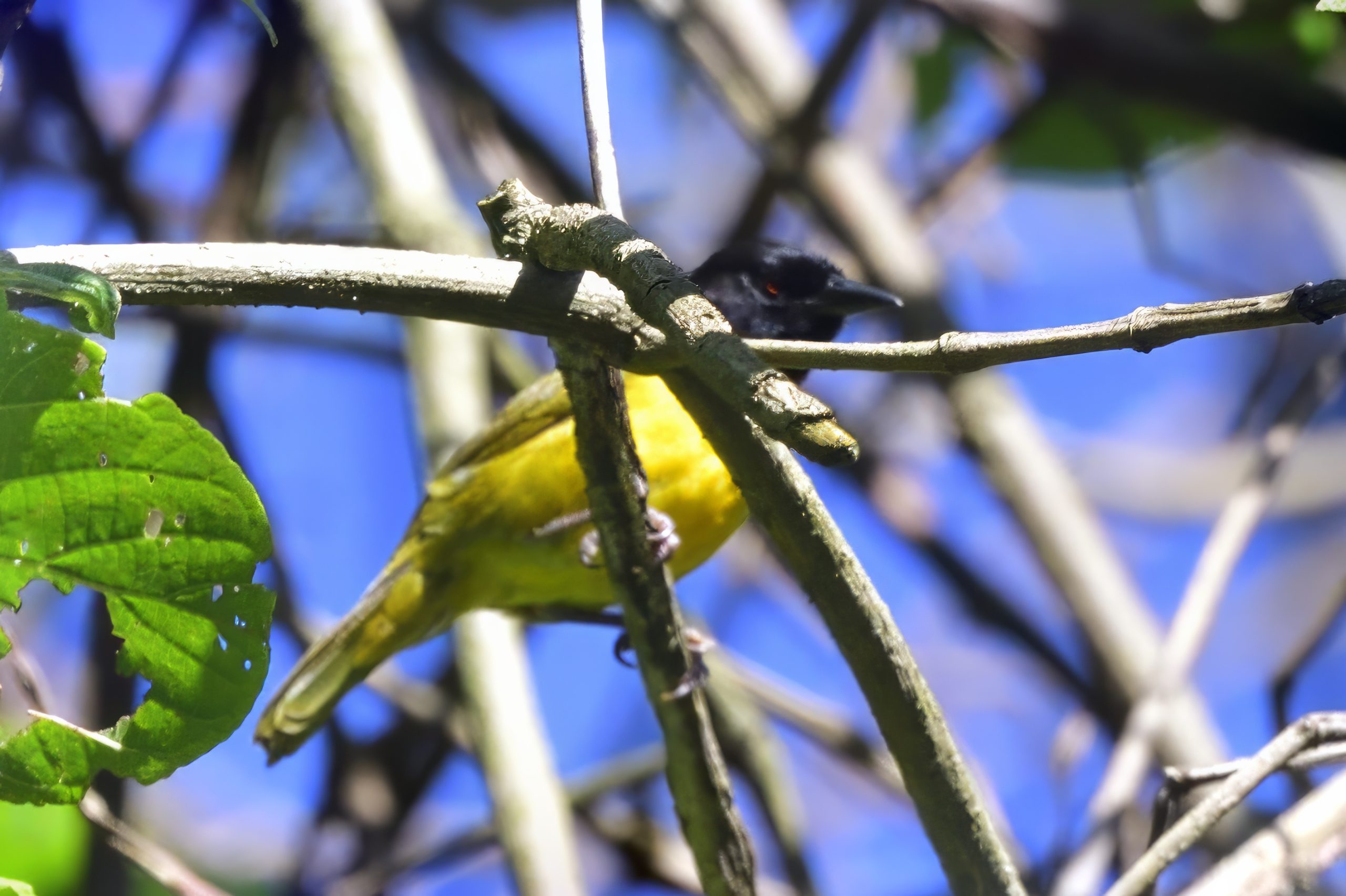
Strange Weaver, Ploceus alienus – Lifer – Endemic to Albertine Rift Valley

Blue-headed Sunbird, Cyanomitra alinea – Picture Lifer – Endemic to Albertine Rift Mountains

White-bellied Crested Flycatcher, Elminia albiventris – Lifer

Albertine Sooty Boubou, Laniarius holomelas – Lifer – Endemic to Albertine Rift

Grauer´s Broadbill, Pseudocalyptomena graueri – Lifer – Endemic to Albertine Rift

Gordon and I are relaxing after having found the Broadbill

Stripe-breasted Tit, Melaniparus fasciiventer – Endemic to Albertine Rift

Dwarf Honeyguide, Indicator pumilio – Lifer – Endemic to Albertine Rift Mountains

White-eyed Slaty Flycatcher, Meleaenornis fischeri
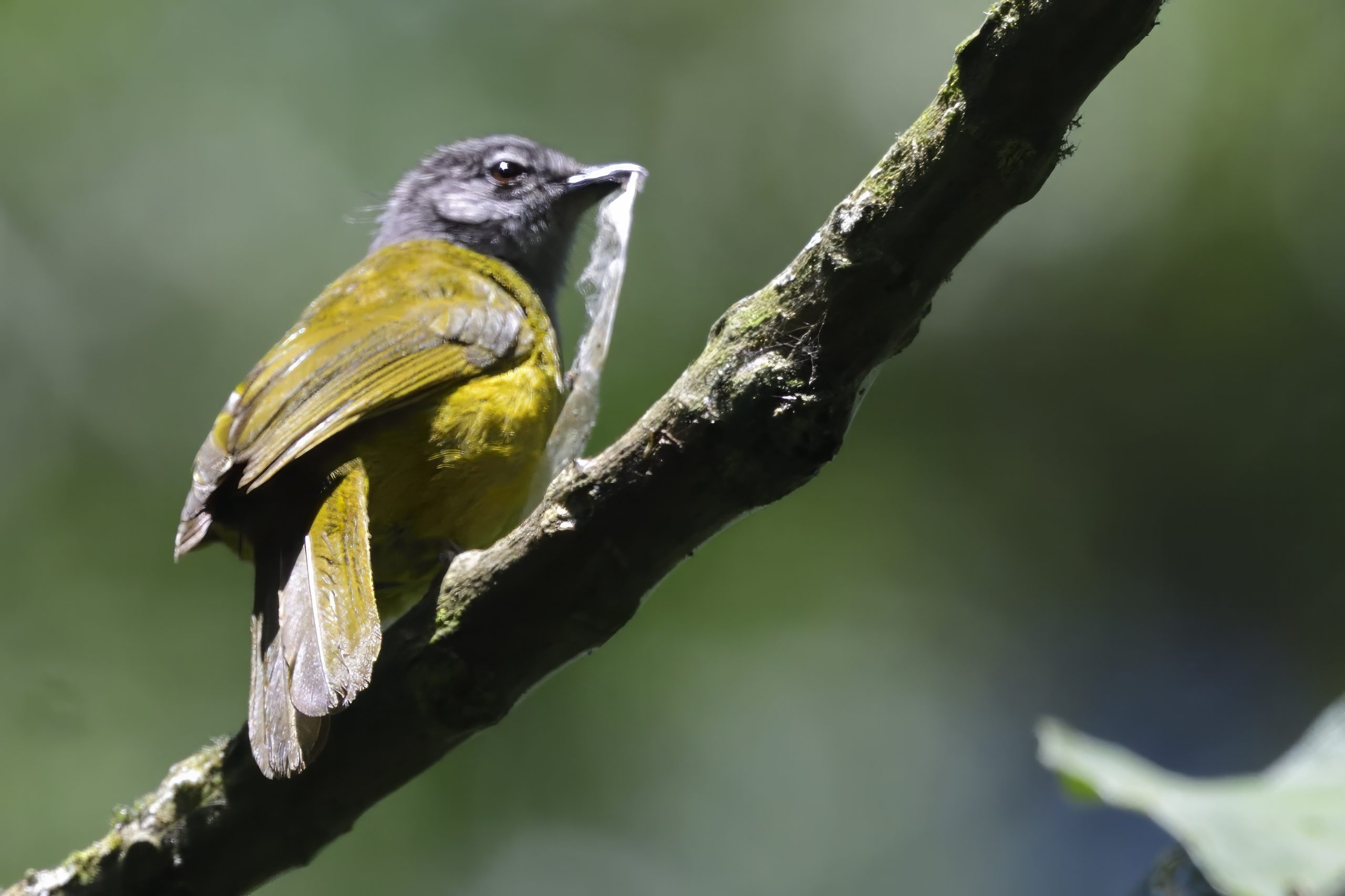
Olive-breasted Greenbul, Arizelocichla kikuyuensis – Endemic to Albertine Rift and Central Kenya
Day 13, Sunday, May 21 – Ruhija, Uganda to Bunazi, Tanzania
All 3 of us left early in the morning. We stopped and birded a little just outside Ruhija. Here are some of the birds we found: Slender-billed Starling, Great Blue Turaco, Grauer´s Warbler and Red-throated Alethe. We left Ruhija and drove towards Kabale. Giraffe needed to go back to Kampala so Robert and I continued to the border. We actually picked up quite a few of Ugandas national birds, the Grey-crowned Crane on the way. In total I observed 337 species in Uganda. This is for me a very low number compared to the number of birds I get in Tanzania and Kenya, but quality instead of quantity? After some trouble at the border, we met up with Isaac Kilusa who were going to come with us all the way to Arusha. Isaac had already booked us a guest house in Bunazi, so we continued straight there. On the way from the border to Bunazi, we picked up a few birds: Western Banded Snake Eagle, Broad-billed Roller, Fan-tailed Widowbird, Palm-nut Vulture, Black-winged Kite, Grey-backed Fiscal, Red-rumped Swallow, Woodland Kingfisher and Black-backed Puffback. We had some food and later we went out and bought some supplies for the camping in Minziro Forest that lay ahead.
Some pictures from Day 13

Great Blue Turaco, Corythaeola cristata

Morning fog coming down from Ruhija
Day 14, Monday, May 22 – Bunazi to Minziro Forest, Tanzania
We had to go to an office in Bunazi to organise our permit for the 3 night stay inside the forest. The permit took some time as expeced, but eventually we were on the way. A local ranger were to show us the place for a potential camp site. He drove very fast on his motorcycle and we lost him at least once and realised when we were on a side road bordering Uganda :-). He picked us up and showed us a camp ground. next to the forest, but also next to many villages with the people, cows, wood shopping and and general noise that follows with that. On the way in from the car, here are some of the species registered: Black-headed Gonolek, Mosque Swallow, White-headed Saw-wing, Eastern Plantain-eater, African Grey Woodpecker, Great Blue Turaco, Ross´s Turaco, Northern Brown-throated Weaver, Black-lored Babbler, Fan-tailed Grassbird, Blue Swallow and Blue-spotted Wood Dove. We sat up camp and listened to birds at the same time: Black-and-white-casqued Hornbill and Greater Honeyguide were keeping us company. Once camp were up, the boys wanted to go birding right away. I told them we should wait a few hours because it was still hot, but we left the camp around 12:30. As expected it were rather quiet and we soon found out that the paths were extremely wet and muddy to the fact that I broke my flip flops. Here are some of the birds we registered on our first walk: Yellow-rumped Tinkerbird, Yellow-spotted Barbet (TZ Lifer), Black-and White Shrike Flycatcher, Lesser Honeyguide, African Shrike Flycatcher, Lizard Buzzard, African Pygmy Kingfisher, Red-bellied Paradise Flycatcher, Olive-green Camaroptera (TZ-Lifer), White-chinned Prinia, Black-necked Weaver, Green Hylia (TZ Lifer), Spectackled Weaver, Green-headed Sunbird, Black-faced Rufous-Warbler (TZ Lifer), Crowned Hornbill, Western Oriole (TZ Lifer), Tambourine Dove, African Emerald Cuckoo, White-spotted Flufftail (TZ Lifer). Hairy-breasted Barbet, Scaly-breasted Illadopsis (TZ Lifer), African Pied Wagtail, Red-chested Cuckoo, Slender-tailed Nightjar and African Wood Owl.
Some pictures from Day 14, Minziro Forest, Tanzania:

Camp in Minziro Forest

Lesser Honeyguide, Indicator minor
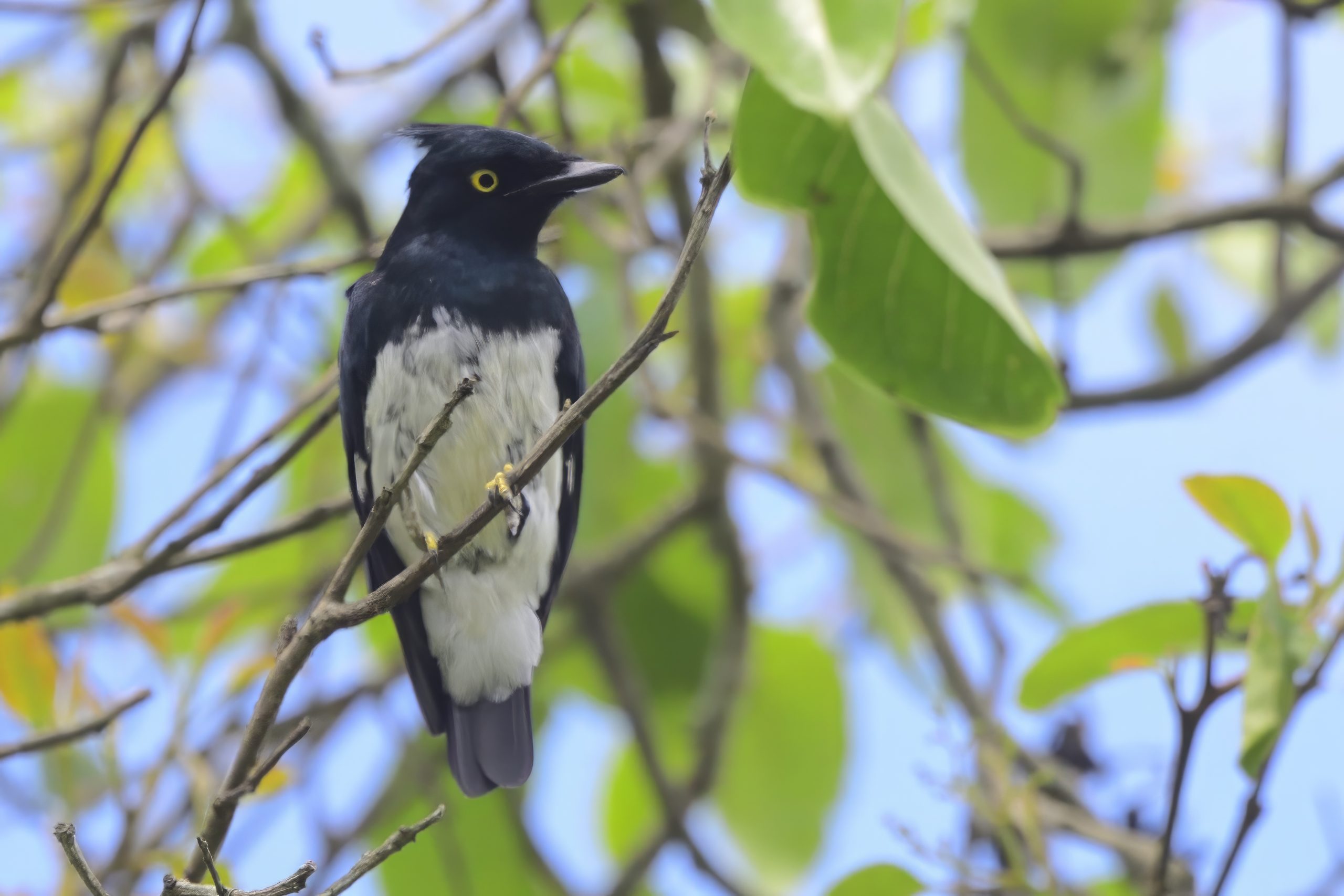
Black-and-white Shrike Flycatcher, Bias musicus

Olive-green Camaroptera, Camaroptera chloronata – TZ Lifer

Little Greenbul, Eurillas virens

Yellow-rumped Tinkerbird, Pogoniliulus bilineatus

African Pied Wagtail, Motacilla aguimp
Day 15, Tuesday, May 23 – Minziro Forest, Tanzania
We started birding around camp: Here are some of the birds we registered: Black-throated Apalis, Brown Illadopsis (TZ Lifer), Ashy Flycatcher, Spotted Greenbul, Yellow-throated Longclaw, African Openbill, Grey-headed Nigrita, Scarlet-chested Sunbird, Moustached Grass Warbler, Jameson´s Wattle-eye (TZ Lifer), Red-tailed Bristlebill (TZ Lifer) and Little Bee-eater We decided to hit another part of the forest where I were last time so we got in the car and drove. Some of the birds observed on the way: Angolan Swallow, Long-crested Eagle, Grey-capped Warbler, Slender-billed Weaver, Northern Brown-throated Weaver, Green-headed Sunbird, African Wattled Lapwing, Thick-billed Weaver and Blue-headed Coucal. The path we used in 2016 were to wet so at a point we decided to turn back and hit the main road. Some other birds observed before we made it back to camp: Black Crake, Brown-backed Scrub Robin (TZ Lifer), Western Citril, Diederik Cuckoo and Mackinnon´s Shrike (TZ Lifer). Back in camp, we took another path. Here are some of the birds we observed: Blue Malkoha, Plain Greenbul (TZ Lifer), Yellow-spotted Barbet (TZ Lifer) Slender-billed Greenbul, Green Crombec, Chestnut Wattle-eye (TZ Lifer), Blue-breasted Kingfisher (TZ Lifer), Grey-throated Tit Flycatcher (TZ Lifer), Borown Illadopsis (TZ Lifer), Square-tailed Nightjar, Coppery Sunbird (TZ Photo Lifer), Sooty Chat, Spectackled Weaver, White-winged Black Tit (TZ Photo Lifer)

Isaac, Robert and me in Minziro Forest, NW Tanzania

Northern Brown-throated Weaver, Ploceus castanops

Slender-billed Weaver, Ploceus pelzelni

Female Green-headed Sunbird, Cyanomitra verticalis

Mackinnon´s Shrike, Lanius mackinnoni (TZ Lifer)

Yellow-spotted Barbet, Buccanodon duchaillui (TZ Lifer)

Green Crombec, Sylvietta virens

Green Hylia, Hylia prasina – TZ Lifer

African Shrike Flycatcher (male), Megabyas flammatus

African Shrike Flycatcher (female), Megabyas flammatus

Yellow-throated Longclaw, Macronyx croceus

Sooty Chat (female), Myrmecocichla nigra

Copper Sunbird, Cinnyris cupreus – TZ Photo Lifer

Spectackled Weaver, Ploceus ocularis
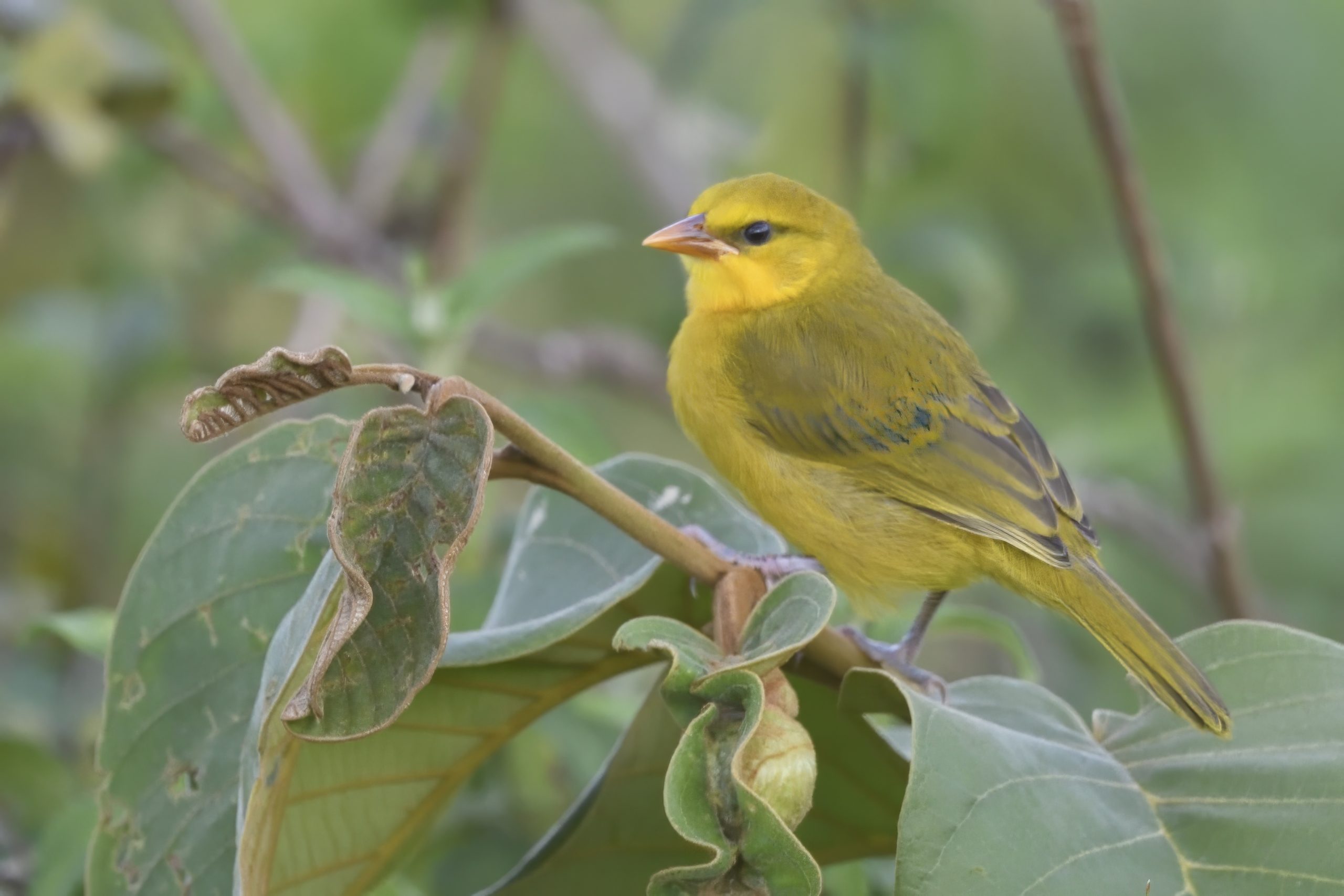
Spectackled Weaver (Female), Ploceus ocularis

White-winged Black Tit, Melaniparus leucomelas – TZ Photo Lifer
Day 16, Wednesday, May 24 – Minziro Forest, Tanzania
We started the morning with a walk from camp. Here are some of the birds we observed: Woolly-necked Stork, Palm-nut Vulture, African Thrush, Afep Pigeon, Yellow Longbill (heard), Brown Illadopsis, Fraser´s Rufous Thrush (TZ Lifer), Western Oriole (TZ Lifer), Xavier´s Greenbul (TZ Lifer), Black-faced Rufous Warbler (TZ Lifer), Buff-throated Apalis and African Harrier Hawk. We returned to camp to see that a huge storm were on the way. We were in a wet area and I knew that with some heavy rain, our camp would be flooded. The rain came torrential and I was afraid of the car getting stuck, so I tried to drive to dry land, but got stuck. We packed camp in a hurry and with the help off the high lift jack I jacket up all 4 wheels one at the time and we placed logs under each wheel. With some skilful driving, I managed to get the car to dry ground. I left the jack and our Canopy behind and Robert and some locals soon arrived with the rest of the gear. I relaxed under a shelter with a local family while waiting for Robert. We made a new plan to bird our way back out to Bunazi. There is a large part of the forest adjacent to the road. It were very hot, but we were looking for paths that we could use the morning after. Some of the birds we registered that afternoon included: Grey-backed Fiscal, Black-billed Turaco, Olive-bellied Sunbird, Dusky Long-tailed Cuckoo (TZ Lifer), Green Crombec, Yellow-spotted Barbet, Blue-shouldered Robin-Chat (TZ Lifer), Common Waxbill, White-headed Saw-wing, White-tailed Ant Thrush (TZ Lifer), Green-headed Sunbird. Spotted Greenbul, Yellow-rumped Tinkerbird, Little Greenbul and Western Nicator (TZ Lifer). We drove back to our guest house in Bunazi and had a shower and dinner there.
Some pictures from Day 16:

Palm-nut Vulture, Gypohierax angolensis

Western Oriole, Oriolus brachyrynchus – TZ Lifer

Fraser´s Rufous Thrush, Stizorhina fraseri – TZ Lifer

Little Grey Greenbul, Eurillas gracilis
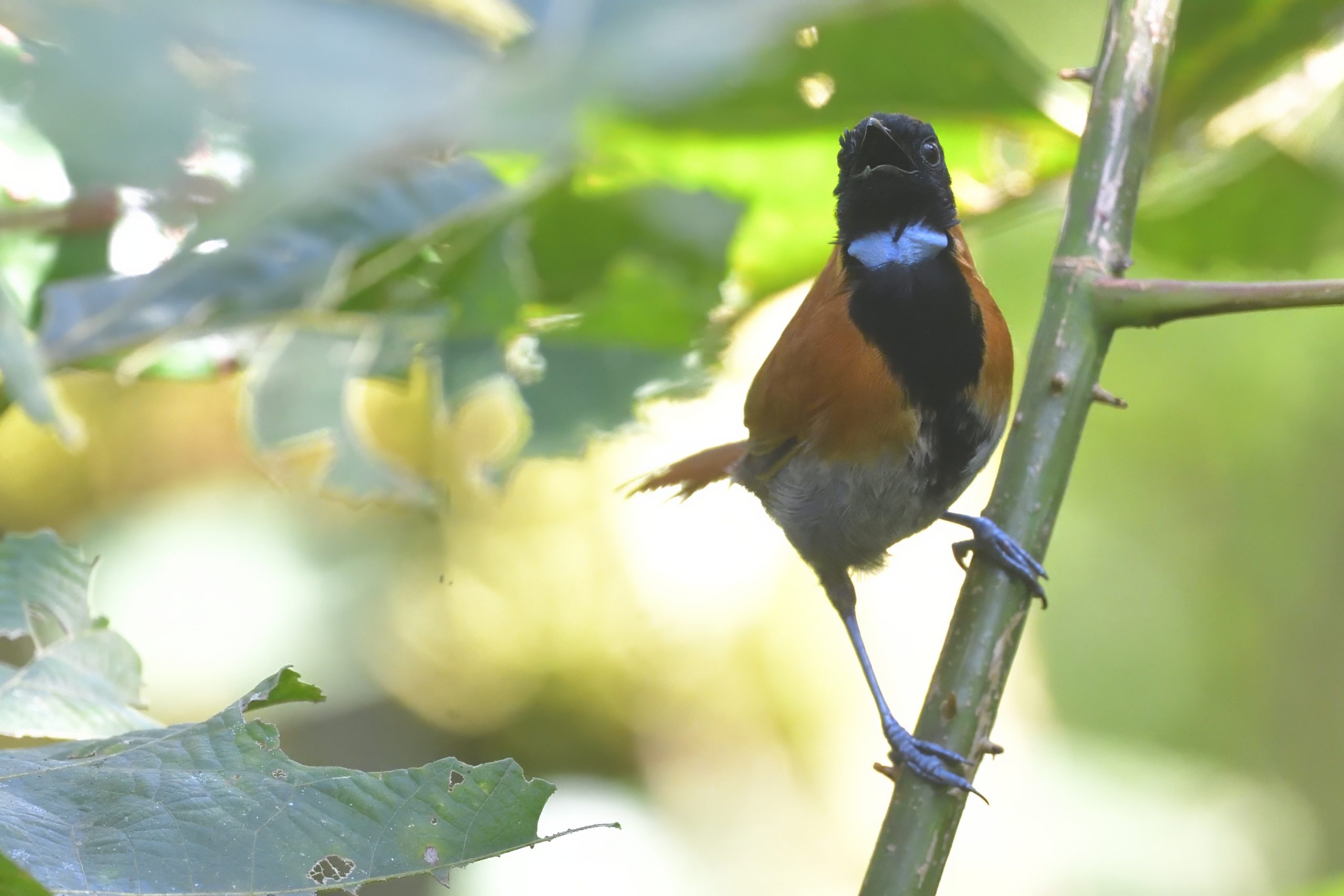
Black-faced Rufous Warbler, Bathmocercus rufus – TZ Lifer

A friendly local family gave me shelter from the rain while I was waiting for Robert to carry rest of the gear to dry ground

Olive-bellied Sunbird, Cinnyris chloropugius
Day 17, Thursday, May 25 – Minziro Forest to Muleba
The last day in Minziro Forest before we were supposed to bird our way slowly towards Arusha. We drove from Bunazi to the end of the Forest and birded our way out toward the main road. We actuall only managed to cover 2 paths. Here are some of the birds we registered: Plain-backed Pipit, Blue-breasted Kingfisher (TZ Lifer), Blue Malkoha, Lowland Masked Apalis (Lifer), Yellow Longbill (Picture Lifer), Grey-throated Tit-Flycatcher (TZ Lifer), Red-headed Bluebill, Blue-shouldered Robin-Chat, Scaly-breasted Illadopsis, Forest Robin (TZ Lifer), Black-billed and Great Blue Turaco. Fantastic birding.

Plain-backed Pipit, Anthreptes reichenowi

Blue-breasted Kingfisher – TZ Lifer

Yellow Longbill, Macrosphenus flavicans – Picture Lifer

Lowland Masked Apalis, Apalis binotata – Lifer

Forest Robin, Stiphornis erythrothorax – TZ Lifer

Western Nicator, Nicator chloris – TZ Lifer
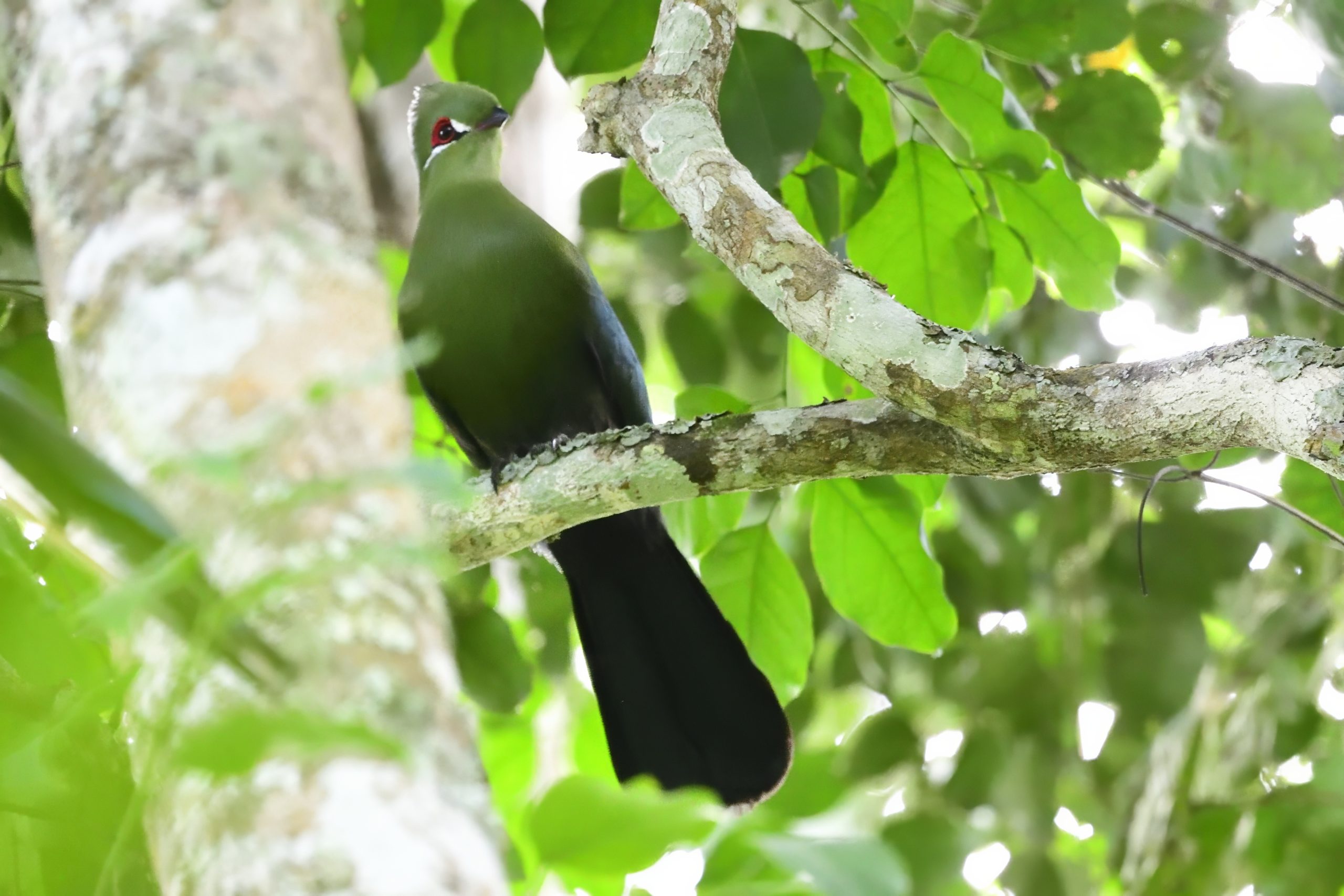
Black-billed Turaco, Tauraco schuetti
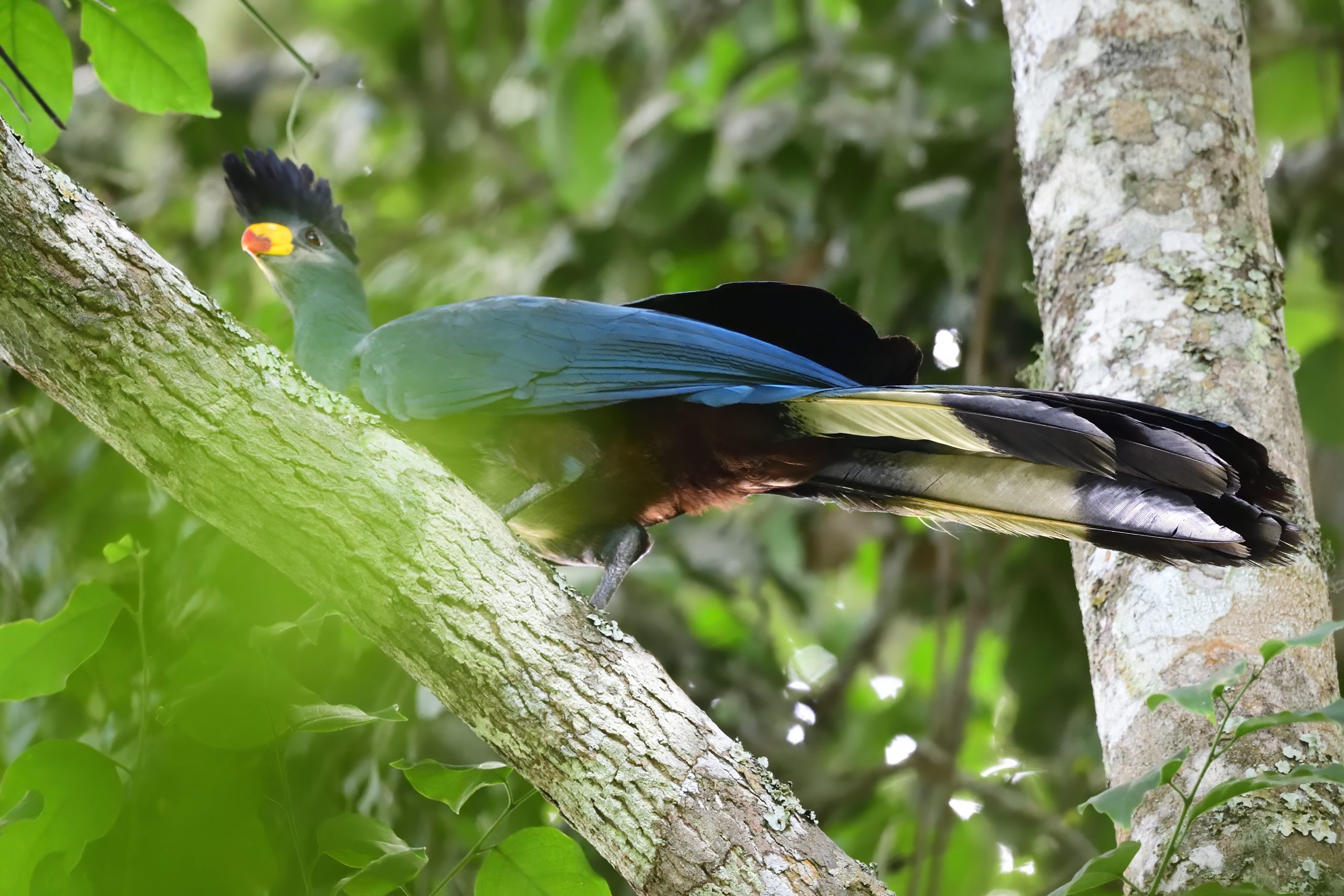
Great Blue Turaco, Corythaeola cristata
We were on the main road at around 13:00 and with at least 5 hours of daylight, we decided to push it as far as possible, but the car decided otherwise. Just 9 km outside of Muleba, the car stopped. We had to tow it back to Muleba. The mechanic said we needed a new top gasket. After a few days he were finished, but poor repair. In the end we ended up in Mwanza and stayed 3 nights there. Robert and i drove through the night back to Arusha 6 days delayed due to poor mechanics and arrived 3 AM in the morning on June 1.
Last picture from the trip.

Splendid Starling, Lamprotornis splendidus
In terms of birding a fantastic trip, but my trusty Landy combined with very poor mechanics really had me waste 7 nights on the road. Again with 23 EA Lifers, 34 EA Picture Lifers, 32 TZ Lifers and 19 TZ Picture lifers a fantastic birding trip. I have driven my old Lanbd Rover, Lizzie, for more than 125.000 km in East Africa and I have never had any major problems before. I only blame the poor mechanics for all my troubles. It all started when the mechanic in Fort Portal forgot to strap the water pipe back on to the turbo pipe. Then the mechanic in Muleba, that changed the top gasket with no experience whatsoever. Lastly the Indian couple in Mwanza where we arrived on a Sunday night. They promised to fix my car on Monday. I asked if this will take several days, we will take the bus back to my home, but that f…ng idiot promised me the car finished the day after. We finally left at 13:00 3 days later and had not driven more than 200 km before the brand new turbo pipe broke, I lost my clutch, the car overheated and the rear diff were leaking. I managed to patch everything up with tape and asked the lady of the garage in Mwanza to hook me up with a mechanic in Singida to top up my rear diff, that b…h refused. In the end, I patched up the car and Robert and I arrived 3AM in the morning of June 1. We were supposed to bird on the way with one night in Mbulu mountains, but my prime priority were to get back home. My trusted local mechanic have the car now as I write and I expect the car to be in full shape long before my next adventure with my South African friends mid July.